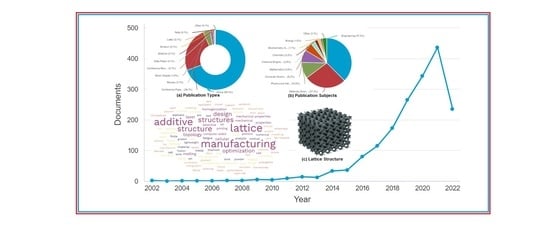Scientometric Review for Research Patterns on Additive Manufacturing of Lattice Structures
Abstract
:1. Introduction
2. Materials and Methods
2.1. Data Retrieval
2.2. Research Methodology
2.3. Article Selection
2.4. Research Indicators
2.5. Scientometric Analysis
2.6. VOS Viewer
3. Results and Analysis
3.1. Publication History
3.2. Publication Sources
3.3. Publication Subjects
3.4. Publication Type
3.5. Publication Keywords
3.6. Publication Affiliation
3.7. Publication Authors
3.8. Publication Citations
3.9. Publication Collaborations by Co-Authorship
3.10. Publication Countries/Regions
4. Implications of Trends for Future Research
4.1. Implications of Publication Volume
4.2. Implications of Additive Manufacturing Processes
4.3. Implications of Policy Documents
4.4. Implications of the COVID-19 Pandemic
5. Conclusions
Supplementary Materials
Author Contributions
Funding
Institutional Review Board Statement
Informed Consent Statement
Data Availability Statement
Acknowledgments
Conflicts of Interest
References
- Cheng, B.; Chou, K. Geometric consideration of support structures in part overhang fabrications by electron beam additive manufacturing. Comput. Aided Des. 2015, 69, 102–111. [Google Scholar] [CrossRef] [Green Version]
- Bui, T.Q.; Hu, X. A review of phase-field models, fundamentals and their applications to composite laminates. Eng. Fract. Mech. 2021, 248, 107705. [Google Scholar] [CrossRef]
- Amaechi, C.V.; Gillet, N.; Odijie, A.C.; Hou, X.; Ye, J. Composite Risers for Deep Waters Using a Numerical Modelling Approach. Compos. Struct. 2019, 210, 486–499. [Google Scholar] [CrossRef] [Green Version]
- Ye, J.; Cai, H.; Liu, L.; Zhai, Z.; Amaechi, C.V.; Wang, Y.; Wan, L.; Yang, D.; Chen, X.; Ye, J. Microscale intrinsic properties of hybrid unidirectional/woven composite laminates: Part I: Experimental tests. Compos. Struct. 2021, 262, 113369. [Google Scholar] [CrossRef]
- Amaechi, C.V.; Gillet, N.; Ja’e, I.A.; Wang, C. Tailoring the local design of deep water composite risers to minimise structural weight. J. Compos. Sci. 2022, 6, 103. [Google Scholar] [CrossRef]
- Blok, G.; Longana, L.; Yu, H.; Woods, S. An investigation into 3D printing of fibre reinforced thermoplastic composites. Addit. Manuf. 2018, 22, 176–186. [Google Scholar] [CrossRef]
- Amaechi, C.V. Local tailored design of deep water composite risers subjected to burst, collapse and tension loads. Ocean. Eng. 2022, 250, 110196. [Google Scholar] [CrossRef]
- Mirzendehdel, A.M.; Suresh, K. Support structure constrained topology optimization for additive manufacturing. Comput. Aided Des. 2016, 81, 1–13. [Google Scholar] [CrossRef] [Green Version]
- Advincula, R.; Dizon, J.; Chen, Q.; Niu, I.; Chung, J.; Kilpatrick, L.; Newman, R. Additive manufacturing for COVID-19: Devices, materials, prospects, and challenges. MRS Commun. 2020, 10, 413–427. [Google Scholar] [CrossRef]
- Hussein, A.; Hao, L.; Yan, C. Advanced Lattice Support Structures for Metal Additive Manufacturing. J. Mater. Process. Technol. 2013, 213, 1019–1026. [Google Scholar] [CrossRef]
- Ranjan, R.; Samant, R.; Anand, S. Design for Manufacturability in Additive Manufacturing Using a Graph Based Approach. In Proceedings of the ASME 2015 International Manufacturing Science and Engineering Conference, Charlotte, NC, USA, 8–12 June 2015; Volume 1. [Google Scholar] [CrossRef]
- Vayre, B.; Vignat, F.; Villeneuve, F. Designing for Additive Manufacturing. Procedia CIRP 2012, 3, 632–637. [Google Scholar] [CrossRef] [Green Version]
- Dong, G.; Tessier, D.; Zhao, Y.F. Design of Shoe Soles Using Lattice Structures Fabricated by Additive Manufacturing. In Proceedings of the Design Society: International Conference on Engineering Design; Cambridge University Press: Cambridge, UK, 2019; Volume 1, pp. 719–728. [Google Scholar] [CrossRef] [Green Version]
- Diegel, O.; Schutte, J.; Ferreira, A.; Chan, Y.L. Design for additive manufacturing process for a lightweight hydraulic manifold. Addit. Manuf. 2020, 36, 101446. [Google Scholar] [CrossRef]
- Dar, U.A.; Mian, H.H.; Abid, M.; Topa, A.; Sheikh, M.Z.; Bilal, M. Experimental and numerical investigation of compressive behavior of lattice structures manufactured through projection micro stereolithography. Mater. Today Commun. 2020, 25, 101563. [Google Scholar] [CrossRef]
- Xie, G.; Dong, Y.; Zhou, J.; Sheng, Z. Topology optimization design of hydraulic valve blocks for additive manufacturing. Proc. Inst. Mech. Eng. Part C J. Mech. Eng. Sci. 2020, 234, 1899–1912. [Google Scholar] [CrossRef]
- Cheng, L.; To, A. Part-scale build orientation optimization for minimizing residual stress and support volume for metal additive manufacturing: Theory and experimental validation. Comput. Aided Des. 2019, 113, 1–23. [Google Scholar] [CrossRef]
- Cheng, L.; Liang, X.; Bai, J.; Chen, Q.; To, J.L.A. On utilizing topology optimization to design support structure to prevent residual stress induced build failure in laser powder bed metal additive manufacturing. Addit. Manuf. 2019, 27, 290–304. [Google Scholar] [CrossRef]
- Salmi, M. Additive Manufacturing Processes in Medical Applications. Materials 2021, 14, 191. [Google Scholar] [CrossRef] [PubMed]
- Zhang, K.; Qu, H.; Guan, H.; Zhang, J.; Zhang, X.; Xie, X.; Yan, L.; Wang, C. Design and Fabrication Technology of Metal Mirrors Based on Additive Manufacturing: A Review. Appl. Sci. 2021, 11, 10630. [Google Scholar] [CrossRef]
- Wang, X.; Wang, C.; Zhou, X.; Wang, D.; Zhang, M.; Gao, Y.; Wang, L.; Zhang, P. Evaluating Lattice Mechanical Properties for Lightweight Heat-Resistant Load-Bearing Structure Design. Materials 2020, 13, 4786. [Google Scholar] [CrossRef] [PubMed]
- Ning, F.; Cong, W.; Jia, Z.; Wang, F.; Zhang, M. Additive manufacturing of CFRP composites using fused deposition modeling: Effects of process parameters 1989. In Proceedings of the ASME 2016 11th International Manufacturing Science and Engineering Conference, Blacksburg, Virginia, USA, 27 June – 1 July 2016; Volume 3, p. 003. [Google Scholar] [CrossRef]
- Korshunova, N.; Alaimo, G.; Hosseini, S.B.; Carraturo, M.; Reali, A.; Niiranen, J.; Auricchio, F.; Rank, E.; Kollmannsberger, S. Bending behavior of octet-truss lattice structures: Modelling options, numerical characterization and experimental validation. Mater. Des. 2021, 205, 109693. [Google Scholar] [CrossRef]
- Azzouz, L.; Chen, Y.; Zarrelli, M.; Pearce, J.M.; Mitchell, L.; Ren, G.; Grasso, M. Mechanical properties of 3-D printed truss-like lattice biopolymer non-stochastic structures for sandwich panels with natural fibre composite skins. Compos. Struct. 2019, 213, 220–230. [Google Scholar] [CrossRef] [Green Version]
- Long, J.; Nand, A.; Ray, S. Application of Spectroscopy in Additive Manufacturing. Materials 2021, 14, 203. [Google Scholar] [CrossRef] [PubMed]
- Obadimu, S.O.; Kourousis, K.I. Compressive Behaviour of Additively Manufactured Lattice Structures: A Review. Aerospace 2021, 8, 207. [Google Scholar] [CrossRef]
- Ueno, A.; Guo, H.; Takezawa, A.; Moritoyo, R.; Kitamura, M. Temperature Distribution Design Based on Variable Lattice Density Optimization and Metal Additive Manufacturing. Symmetry 2021, 13, 1194. [Google Scholar] [CrossRef]
- Huang, J.; Zhang, Q.; Scarpa, F.; Liu, Y.; Leng, J. Bending and benchmark of zero Poisson’s ratio cellular structures. Compos. Struct. 2016, 152, 729–736. [Google Scholar] [CrossRef] [Green Version]
- Chowdhury, S.; Mhapsekar, K.; Anand, S. Part Build Orientation Optimization and Neural Network-Based Geometry Compensation for Additive Manufacturing Process. J. Manuf. Sci. Eng. Trans. ASME 2018, 140, 031009. [Google Scholar] [CrossRef]
- Choi, S.; Samavedam, S. Modelling and Optimisation of Rapid Prototyping. Comput. Ind. 2002, 47, 39–53. [Google Scholar] [CrossRef]
- Stichel, T.; Laumer, T.; Linnenweber, T.; Amend, P.; Roth, S. Mass flow characterization of selective deposition of polymer powders with vibrating nozzles for laser beam melting of multi-material components. Phys. Procedia 2016, 83, 947–953. [Google Scholar] [CrossRef] [Green Version]
- Chianrabutra, S.; Mellor, B.G.; Yang, S. A Dry Powder Material Delivery Device for Multiple Material Additive Manufacturing. In Proceedings of the 25th Annual International Solid Freeform Fabrication Symposium: An Additive Manufacturing Conference, Austin, TX, USA, 4–6 August 2014; Bourell, D.L., Ed.; University of Texas at Austin: Austin, TX, USA, 2014. ISBN 1053-2153. [Google Scholar]
- Kruth, J.P.; Mercelis, P.; Van Vaerenbergh, J.; Froyen, L.; Rombouts, M. Binding mechanisms in selective laser sintering and selective laser melting. Rapid Prototyp. J. 2005, 11, 26–36. [Google Scholar] [CrossRef] [Green Version]
- Babuska Tomas, F.; Krick Brandon, A.; Susan Donald, F.; Kustas Andrew, B. Comparison of powder bed fusion and directed energy deposition for tailoring mechanical properties of traditionally brittle alloys. Manuf. Lett. 2021, 28, 30–34. [Google Scholar] [CrossRef]
- Grierson, D.; Rennie, A.E.W.; Quayle, S.D. Machine Learning for Additive Manufacturing. Encyclopedia 2021, 1, 576–588. [Google Scholar] [CrossRef]
- Wang, C.; Tan, X.P.; Tor, S.B.; Lim, C.S. Machine learning in additive manufacturing: State-of-the-art and perspectives. Addit. Manuf. 2020, 36, 101538. [Google Scholar] [CrossRef]
- Zhang, Y.; Dong, G.; Yang, S.; Zhao, Y.F. Machine learning assisted prediction of the manufacturability of laser-based powder bed fusion process. In Proceedings of the ASME Design Engineering Technical Conference; American Society of Mechanical Engineers (ASME), Anaheim, CA, USA, 18–21 August 2019; Volume 1. [Google Scholar] [CrossRef]
- Zheng, Y.; Zhang, W.; Baca Lopez, D.M.; Ahmad, R. Scientometric Analysis and Systematic Review of Multi-Material Additive Manufacturing of Polymers. Polymers 2021, 13, 1957. [Google Scholar] [CrossRef]
- García-León, R.A.; Gómez-Camperos, J.A.; Jaramillo, H.Y. Scientometric Review of Trends on the Mechanical Properties of Additive Manufacturing and 3D Printing. J. Mater. Eng. Perform. 2021, 30, 4724–4734. [Google Scholar] [CrossRef]
- Jin, Y.; Ji, S.; Li, X.; Yu, J. A scientometric review of hotspots and emerging trends in additive manufacturing. J. Manuf. Technol. Manag. 2017, 28, 18–38. [Google Scholar] [CrossRef]
- Osama, S.; Al-Ahmari Ameen, W.; Mian, S. 2019 Additive manufacturing: Challenge, Trends, and Applications. Adv. Mech. Eng. 2019, 11, 1687814018822880. [Google Scholar]
- Chabaud, G.; Castro, M.; Denoual, C.; Le Duigou, A. Hygromechanical properties of 3D printed continuous carbon and glass fibre reinforced polyamide composite for outdoor structural applications Addit. Manuf. 2019, 26, 94–105. [Google Scholar] [CrossRef]
- Liao, G.; Li, Z.; Cheng, Y.; Xu, D.; Zhu, D.; Jiang, S.; Guo, J.; Chen, X.; Xu, G.; Zhu, Y. Properties of oriented carbon fiber/polyamide 12 composite parts fabricated by fused deposition modeling. Mater. Des. 2018, 139, 283–292. [Google Scholar] [CrossRef]
- Wauthle, R.; Vrancken, B.; Beynaerts, B.; Jorissen, K.; Schrooten, J.; Kruth, J.P.; Van Humbeeck, J. Effects of build orientation and heat treatment on the microstructure and mechanical properties of selective laser melted Ti6Al4V lattice structures. Addit. Manuf. 2015, 5, 77–84. [Google Scholar] [CrossRef]
- Gorny, B.; Niendorf, T.; Lackmann, J.; Thoene, M.; Troester, T.; Maier, H.J. In situ characterization of the deformation and failure behaviour of non-stochastic porous structures processed by selective laser melting. Mater. Sci. Eng. A 2011, 528, 7962–7967. [Google Scholar] [CrossRef]
- Mohsenizadeh, M.; Gasbarri, F.; Munther, M.; Beheshti, A.; Davami, K. Additively manufactured lightweight metamaterials for energy absorption. Mater. Des. 2018, 1, 39. [Google Scholar] [CrossRef]
- Maconachie, T.; Leary, M.; Lozanovski, B.; Zhang, X.; Qian, M.; Faruque, O.; Brandt, M. 2019 SLM lattice structures: Properties, performance, applications, and challenges. Mater. Des. 2019, 183, 108137. [Google Scholar] [CrossRef]
- Mark, C. Optimal lattice-structured materials. J. Mech. Phys. Solids 2016, 96, 162–183. [Google Scholar] [CrossRef] [Green Version]
- Mona, M.; Methods for Modelling Lattice Structures. Kth Royal Institute of Technology School of Engineering Sciences. Master’s Thesis, 2020. Available online: http://kth.diva-portal.org/smash/record.jsf?pid=diva2%3A1355716&dswid=2652 (accessed on 3 February 2022).
- Pan, C.; Han, Y.; Lu, J. Design and optimization of lattice structures: A review. Appl. Sci. 2020, 10, 6374. [Google Scholar] [CrossRef]
- Rosen, D.W.; Johnston, S.R.; Reed, M. Design of general lattice structures for lightweight and compliance applications. In Proceedings of the Rapid Manufacturing Conference, Loughborough, UK, 5–6 July 2006; pp. 1–14. Available online: https://www.researchgate.net/publication/43767416_Design_of_General_Lattice_Structures_for_Lightweight_and_Compliance_Applications (accessed on 3 February 2022).
- Ashby, M.F. The properties of foams and lattices. Philos. Trans. R. Soc. A Math. Phys. Eng. Sci. 2006, 364, 15–30. [Google Scholar] [CrossRef] [PubMed]
- Gibson, L.J.; Ashby, M.F. Cellular Solids: Structure and Properties; Cambridge University Press: Cambridge, UK, 1997. [Google Scholar]
- Meza, L.R.; Das, S.; Greer, J.R. Strong, lightweight, and recoverable three-dimensional ceramic nanolattices. Science 2014, 345, 1322–1326. [Google Scholar] [CrossRef] [Green Version]
- Wadley, H.N.; Fleck, N.A.; Evans, A.G. Fabrication and structural performance of periodic cellular metal sandwich structures. Compos. Sci. Technol. 2003, 63, 2331–2343. [Google Scholar] [CrossRef]
- Alzahrani, M.; Choi, S.K.; Rosen, D.W. Design of truss-like cellular structures using relative density mapping method. Mater. Des. 2015, 85, 349–360. [Google Scholar] [CrossRef] [Green Version]
- Tao, W.; Leu, M.C. Design of lattice structure for additive manufacturing. In Proceedings of the 2016 International Symposium on Flexible Automation (ISFA), Cleveland, OH, USA, 1–3 August 2016; pp. 325–332. [Google Scholar] [CrossRef]
- Saleh Alghamdi, S.; John, S.; Roy Choudhury, N.; Dutta, N.K. Additive Manufacturing of Polymer Materials: Progress, Promise and Challenges. Polymers 2021, 13, 753. [Google Scholar] [CrossRef] [PubMed]
- Giubilini, A.; Bondioli, F.; Messori, M.; Nyström, G.; Siqueira, G. Advantages of Additive Manufacturing for Biomedical Applications of Polyhydroxyalkanoates. Bioengineering 2021, 8, 29. [Google Scholar] [CrossRef]
- Pryadko, A.; Surmeneva, M.A.; Surmenev, R.A. Review of Hybrid Materials Based on Polyhydroxyalkanoates for Tissue Engineering Applications. Polymers 2021, 13, 1738. [Google Scholar] [CrossRef]
- Ruban, R.; Rajashekhar, V.S.; Nivedha, B.; Mohit, H.; Sanjay, M.R.; Siengchin, S. Role of Additive Manufacturing in Biomedical Engineering. In Innovations in Additive Manufacturing. Springer Tracts in Additive Manufacturing; Khan, M.A., Jappes, J.T.W., Eds.; Springer: Cham, Switzerland, 2022. [Google Scholar] [CrossRef]
- Sheoran, A.J.; Kumar, H.; Arora, P.K. Moona, GBio-Medical applications of Additive Manufacturing: A Review. Procedia Manuf. 2020, 51, 663–670. [Google Scholar] [CrossRef]
- Kumar, R.; Kumar, M.; Chohan, J. SThe role of additive manufacturing for biomedical applications: A critical review. J. Manuf. Processes 2021, 64, 828–850. [Google Scholar] [CrossRef]
- Popov, V.V., Jr.; Muller-Kamskii, G.; Kovalevsky, A.; Dzhenzhera, G.; Strokin, E.; Kolomiets, A.; Ramon, J. Design and 3D-printing of titanium bone implants: Brief review of approach and clinical cases. Biomed. Eng. Lett. 2018, 8, 337–344. [Google Scholar] [CrossRef] [PubMed]
- Shakibania, S.; Ghazanfari, L.; Raeeszadeh-Sarmazdeh, M.; Khakbiz, M. Medical application of biomimetic 4D printing. Drug Dev. Ind. Pharm. 2021, 47, 521–534. [Google Scholar] [CrossRef]
- Javaid, M.; Haleem, A. 4D printing applications in medical field: A brief review. Clin. Epidemiol. Glob. Health 2019, 7, 317–321. [Google Scholar] [CrossRef] [Green Version]
- Agarwal, T.; Hann, S.Y.; Chiesa, I.; Cui, H.; Celikkin, N.; Micalizzi, S.; Barbetta, A.; Costantini, M.; Esworthy, T.; Zhang, L.G.; et al. 4D printing in biomedical applications: Emerging trends and technologies. J. Mater. Chem. B 2021, 9, 7608–7632. [Google Scholar] [CrossRef]
- Zhou, W.; Qiao, Z.; Zare, E.N.; Huang, J.; Zheng, X.; Sun, X.; Shao, M.; Wang, H.; Wang, X.; Chen, D.; et al. 4D-Printed Dynamic Materials in Biomedical Applications: Chemistry, Challenges, and Their Future Perspectives in the Clinical Sector. J. Med. Chem. 2020, 63, 15–8003. [Google Scholar] [CrossRef] [PubMed]
- Zheng, X.; Smith, W.; Jackson, J.; Moran, B.; Cui, H.; Chen, D.; Ye, J.; Fang, N.; Rodriguez, N.; Weisgraber, T.; et al. Multiscale metallic metamaterials. Nat. Mater. 2016, 15, 1100–1106. [Google Scholar] [CrossRef] [PubMed]
- Yang, L.; Cormier, D.; West, H.; Knowlson, K. NonStochastic Ti-6Al-4V Foam Structure That Shows Negative Poisson’s Ratios. Mater. Sci. Eng. A 2012, 558, 579–585. [Google Scholar] [CrossRef]
- Yang, L.; Harrysson, O.; Cormier, D.; West, H. Compressive Properties of Ti-6Al-4V Auxetic Mesh Structures Made by EBM Process. Acta Mater. 2012, 60, 3370–3379. [Google Scholar] [CrossRef]
- Yang, L.; Harrysson, O.; Cormier, D.; West, H. Modeling of the Uniaxial Compression of a 3D Periodic ReEntrant Honeycomb Structure. J. Mater. Sci. 2012, 48, 1413–1422. [Google Scholar] [CrossRef]
- Cuan-Urquizo, E.; Álvarez-Trejo, A.; Robles Gil, A.; Tejada-Ortigoza, V.; Camposeco-Negrete, C.; Uribe-Lam, E.; Treviño-Quintanilla, C.D. Effective Stiffness of Fused Deposition Modeling Infill Lattice Patterns Made of PLA-Wood Material. Polymers 2022, 14, 337. [Google Scholar] [CrossRef] [PubMed]
- Kladovasilakis, N.; Charalampous, P.; Tsongas, K.; Kostavelis, I.; Tzetzis, D.; Tzovaras, D. Experimental and Computational Investigation of Lattice Sandwich Structures Constructed by Additive Manufacturing Technologies. J. Manuf. Mater. Process. 2021, 5, 95. [Google Scholar] [CrossRef]
- RAENG. Additive Manufacturing: Opportunities and Constraints; Summary Report of Roundtable Forum Held on 23 May 2013; Royal Academy of Engineering (RAENG): London, UK, 2013; Available online: https://raeng.org.uk/media/ak3htcyo/additive_manufacturing.pdf (accessed on 22 July 2022).
- Wohler, T. Wohler’s Report 2013-Additive Manufacturing and 3D Printing State of the Industry. Annual Worldwide Progress Report; Wohler’s Associates, Inc.: Washington, DC, USA, 2013; Available online: https://wohlersassociates.com/product/wohlers-report-2013/ (accessed on 22 July 2022).
- Obi, M.U.; Pradel, P.; Sinclair, M.; Bibb, R. A bibliometric analysis of research in design for additive manufacturing. Rapid Prototyp. J. 2022, 28, 967–987. [Google Scholar] [CrossRef]
- Caviggioli, F.; Ughetto, E. A bibliometric analysis of the research dealing with the impact of additive manufacturing on industry, business and society. Int. J. Prod. Econ. 2019, 208, 254–268. [Google Scholar] [CrossRef]
- Patil, A.K.; Soni, G. A State of The Art Bibliometric Analysis For Additive Manufacturing. Curr. Mater. Sci. 2020, 14, 2021. [Google Scholar] [CrossRef]
- Zhou, Y.; Tang, Y.; Hoff, T.; Garon, M.; Zhao, F.Y. The Verification of the Mechanical Properties of Binder Jetting Manufactured Parts by Instrumented Indentation Testing. Procedia Manuf. 2015, 1, 327–342. [Google Scholar] [CrossRef] [Green Version]
- Forster, A.M. Materials Testing Standards for Additive Manufacturing of Polymer Materials: State of the Art and Standards Applicability; NIST Interagency/Internal Report (NISTIR), National Institute of Standards and Technology: Gaithersburg, MD, USA, 2015. [Google Scholar] [CrossRef]
- Mao, M.; He, J.; Li, X.; Zhang, B.; Lei, Q.; Liu, Y.; Li, D. The Emerging Frontiers and Applications of High-Resolution 3D Printing. Micromachines 2017, 8, 113. [Google Scholar] [CrossRef]
- Bezek, L.B.; Cauchi, M.P.; de Vita, R.; Foerst, J.R.; Williams, C.B. 3D Printing Tissue-Mimicking Materials for Realistic Transseptal Puncture Models. J. Mech. Behav. Biomed. Mater. 2020, 110, 103971. [Google Scholar] [CrossRef]
- Miyanaji, H.; Ma, D.; Atwater, M.A.; Darling, K.A.; Hammond, V.H.; Williams, C.B. Binder Jetting Additive Manufacturing of Copper Foam Structures. Addit. Manuf. 2020, 32, 100960. [Google Scholar] [CrossRef]
- Herzberger, J.; Sirrine, J.M.; Williams, C.B.; Long, T.E. Polymer Design for 3D Printing Elastomers: Recent Advances in Structure, Properties, and Printing. Prog. Polym. Sci. 2019, 97, 101144. [Google Scholar] [CrossRef]
- Sturm, L.D.; Albakri, M.I.; Tarazaga, P.A.; Williams, C.B. In Situ Monitoring of Material Jetting Additive Manufacturing Process via Impedance Based Measurements. Addit. Manuf. 2019, 28, 456–463. [Google Scholar] [CrossRef]
- Chatham, C.A.; Long, T.E.; Williams, C.B. A Review of the Process Physics and Material Screening Methods for Polymer Powder Bed Fusion Additive Manufacturing. Prog. Polym. Sci. 2019, 93, 68–95. [Google Scholar] [CrossRef]
- Moher, D.; Shamseer, L.; Clarke, M.; Ghersi, D.; Liberati, A.; Petticrew, M.; Shekelle, P.; Stewart, L.A.; Group, P.-P.; Altman, D.G.; et al. Preferred reporting items for systematic review and meta-analysis protocols (PRISMA-P) 2015 statement. Syst. Rev. 2015, 4, 1–9. [Google Scholar] [CrossRef] [Green Version]
- Martinez, P.; Al-Hussein, M.; Ahmad, R. A scientometric analysis and critical review of computer vision applications for construction. Autom. Constr. 2019, 107, 102947. [Google Scholar] [CrossRef]
- Hood, W.W.; Wilson, C.S. The literature of bibliometrics, scientometrics, and informetrics. Scientometrics 2001, 52, 291–314. [Google Scholar] [CrossRef]
- Jin, Y.; Li, X.; Campbell, R.I.; Ji, S. Visualizing the hotspots and emerging trends of 3D printing through scientometrics. Rapid Prototyp. J. 2018, 24, 801–812. [Google Scholar] [CrossRef] [Green Version]
- Jemghili, R.; Taleb, A.A.; Mansouri, K. A bibliometric indicators analysis of additive manufacturing research trends from 2010 to 2020. Rapid Prototyp. J. 2021, 27, 1432–1454. [Google Scholar] [CrossRef]
- Parvanda, R.; Kala, P.; Sharma, V. Bibliometric Analysis-Based Review of Fused Deposition Modeling 3D Printing Method (1994–2020). 3D Printing and Additive Manufacturing 2021. ahead of print. [Google Scholar] [CrossRef]
- Dzogbewu, T.C.; Amoah, N.; Fianko, S.K.; Afrifa, S.; de Beer, D. Additive manufacturing towards product production: A bibliometric analysis. Manuf. Rev. 2022, 9, 1. [Google Scholar] [CrossRef]
- Perianes-Rodriguez, A.; Waltman, L.; Van Eck, N.J. Constructing bibliometric networks: A comparison between full and fractional counting. J. Informetr. 2016, 10, 1178–1195. [Google Scholar] [CrossRef] [Green Version]
- Granovsky, Y.V. Is it possible to measure science? V. V. Nalimov’s research in scientometrics. Scientometrics 2001, 52, 127–150. [Google Scholar] [CrossRef]
- Park, J.Y.; Nagy, Z. Data on the interaction between thermal comfort and building control research. Data Brief 2018, 17, 529–532. [Google Scholar] [CrossRef] [PubMed]
- Wu, Z.; Yang, K.; Lai, X.; Antwi-Afari, M.F. A Scientometric Review of System Dynamics Applications in Construction Management Research. Sustainability 2020, 12, 7474. [Google Scholar] [CrossRef]
- Soosaraei, M.; Khasseh, A.A.; Fakhar, M.; Hezarjaribi, H.Z. A decade bibliometric analysis of global research on leishmaniasis in Web of Science database. Ann. Med. Surg. 2018, 26, 30–37. [Google Scholar] [CrossRef]
- Cash-Gibson, L.; Rojas-Gualdrón, D.F.; Pericàs, J.M.; Benach, J. Inequalities in global health inequalities research: A 50-year bibliometric analysis (1966–2015). PLoS ONE 2018, 13, e0191901. [Google Scholar] [CrossRef] [PubMed] [Green Version]
- Sweileh, W.M.; Al-Jabi, S.W.; Zyoud, S.H.; Sawalha, A.F.; Abu-Taha, A.S. Global research output in antimicrobial resistance among uropathogens: A bibliometric analysis (2002–2016). J. Glob. Antimicrob. Resist. 2018, 13, 104–114. [Google Scholar] [CrossRef]
- Krauskopf, E. A bibiliometric analysis of the Journal of Infection and Public Health: 2008–2016. J. Infect. Public Health 2018, 11, 224–229. [Google Scholar] [CrossRef]
- Van Eck, N.J.; Waltman, L. VOSviewer Manual: Manual for VOSviewer Version 1.6.18; Universiteit Leiden: Leiden, The Netherlands, 24 January 2022; pp. 1–53. Available online: https://www.vosviewer.com/documentation/Manual_VOSviewer_1.6.18.pdf (accessed on 12 July 2022).
- Van Eck, N.J.; Waltman, L. VOS: A new method for visualizing similarities between objects. In Advances in Data Analysis: Proceedings of the 30th Annual Conference of the German Classification Society; Lenz, H.-J., Decker, R., Eds.; Springer: Berlin/Heidelberg, Germany, 2007; pp. 299–306. [Google Scholar]
- Van Eck, N.J.; Waltman, L. How to normalize cooccurrence data? An analysis of some well-known similarity measures. J. Am. Soc. Inf. Sci. Technol. 2009, 60, 1635–1651. [Google Scholar] [CrossRef] [Green Version]
- Van Eck, N.J.; Waltman, L. Software survey: VOSviewer, a computer program for bibliometric mapping. Scientometrics 2010, 84, 523–538. [Google Scholar] [CrossRef] [Green Version]
- Van Eck, N.J.; Waltman, L. Text mining and visualization using VOSviewer. ISSI Newsl. 2011, 7, 50–54. [Google Scholar]
- Van Eck, N.J.; Waltman, L. Visualizing bibliometric networks. In Measuring Scholarly Impact: Methods and Practice; Ding, Y., Rousseau, R., Wolfram, D., Eds.; Springer: Berlin/Heidelberg, Germany, 2014; pp. 285–320. [Google Scholar]
- Van Eck, N.J.; Waltman, L.; Dekker, R.; Van den Berg, J. A comparison of two techniques for bibliometric mapping: Multidimensional scaling and VOS. J. Am. Soc. Inf. Sci. Technol. 2010, 61, 2405–2416. [Google Scholar] [CrossRef] [Green Version]
- Van Nunen, K.; Li, J.; Reniers, G.; Ponnet, K. Bibliometric analysis of safety culture research. Saf. Sci. 2018, 108, 248–258. [Google Scholar] [CrossRef]
- Waltman, L.; Van Eck, N.J. A smart local moving algorithm for large-scale modularity-based community detection. Eur. Phys. J. B 2013, 86, 471. [Google Scholar] [CrossRef]
- Waltman, L.; Van Eck, N.J.; Noyons, E.C.M. A unified approach to mapping and clustering of bibliometric networks. J. Informetr. 2010, 4, 629–635. [Google Scholar] [CrossRef] [Green Version]
- Wood, J.; Khan, G.F. International trade negotiation analysis: Network and semantic knowledge infrastructure. Scientometrics 2015, 105, 537–556. [Google Scholar] [CrossRef]
- Chandra, Y. Mapping the evolution of entrepreneurship as a field of research (1990–2013): A scientometric analysis. PLoS ONE 2018, 13, e0190228. [Google Scholar] [CrossRef] [PubMed]
- Chen, C. Searching for intellectual turning points: Progressive Knowledge Domain Visualization. Proc. Natl. Acad. Sci. USA 2004, 101, 5303–5310. [Google Scholar] [CrossRef] [Green Version]
- Chen, C. CiteSpace II: Detecting and visualizing emerging trends and transient patterns in scientific literature. JASIST 2006, 57, 359–377. [Google Scholar] [CrossRef] [Green Version]
- Chen, C. System and Method for Automatically Generating Systematic Reviews of a Scientific Field. U.S. Patent US20110295903A1, 22 October 2010. [Google Scholar]
- Chen, C. CiteSpace: A Practical Guide for Mapping Scientific Literature; Nova Science Publishers: New York, NY, USA, 2016. [Google Scholar]
- Chen, C. Science mapping: A systematic review of the literature. JDIS 2017, 2, 1–40. [Google Scholar] [CrossRef] [Green Version]
- Chen, C. A Glimpse of the First Eight Months of the COVID-19 Literature on Microsoft Academic Graph. Front. Res. Metr. Anal. 2020, 5, 607286. [Google Scholar] [CrossRef]
- Chen, C.; Ibekwe-Sanjuan, F.; Hou, J. The structure and dynamics of co-citation clusters: A multiple-perspective co-citation analysis. J. Am. Soc. Inf. Sci. Technol. (JASIST) 2010, 61, 1386–1409. [Google Scholar] [CrossRef] [Green Version]
- Chen, C.; Song, M. Visualizing a field of research: A methodology of systematic scientometric reviews. PLoS ONE 2019, 14, e0223994. [Google Scholar] [CrossRef] [PubMed] [Green Version]
- Scimago. Scimago Journal & Country Rank. Scimango Lab. 2022. Available online: https://www.scimagojr.com/journalrank.php (accessed on 12 July 2022).
- WoS. Web of Science Database. 2022. Available online: https://www-webofscience-com.ezproxy.lancs.ac.uk/wos/woscc/basic-search (accessed on 12 July 2022).
- Scopus. SCOPUS Database. Elsevier B.V. 2022. Available online: https://www-scopus-com.ezproxy.lancs.ac.uk/search/form.uri?display=basic#basic (accessed on 12 July 2022).
- Clarivate. Journal Citation Reports. 2022. Available online: https://jcr.clarivate.com/jcr/home (accessed on 12 July 2022).
- Clarivate. Journal Citation Reports™ (JCR) Infographics: Make Better Informed, More Confident Decisions. 2022. Available online: https://clarivate.com/webofsciencegroup/web-of-science-journal-citation-reports-2021-infographic/ (accessed on 12 July 2022).
- AlRyalat SA, S.; Malkawi, L.W.; Momani, S.M. Comparing Bibliometric Analysis Using PubMed, Scopus, and Web of Science Databases. J. Vis. Exp. 2019, 152, e58494. [Google Scholar] [CrossRef]
- Zhang, Y.; Liu, H.; Kang, S.C.; Al-Hussein, M. Virtual reality applications for the built environment: Research trends and opportunities. Autom. Constr. 2020, 118, 103311. [Google Scholar] [CrossRef]
- Kim, M.J.; Wang, X.; Love, P.E.D.; Li, H.; Kang, S.C. Virtual reality for the built environment: A critical review of recent advances. J. Inf. Technol. Constr. 2013, 18, 279–305. Available online: https://www.itcon.org/2013/14 (accessed on 22 July 2022).
- Hirsch, J.E. An Index to Quantify an Individual’s Scientific Research Output. Proc. Natl. Acad. Sci. USA 2005, 102, 16569–16572. [Google Scholar] [CrossRef] [Green Version]
- Kamdem, J.P.; Duarte, A.E.; Lima, K.R.R.; Rocha, J.B.T.; Hassan, W.; Barros, L.M.; Roeder, T.; Tsopmo, A. Research Trends in Food Chemistry: A Bibliometric Review of its 40 Years Anniversary (1976–2016). Food Chem. 2019, 294, 448–457. [Google Scholar] [CrossRef] [PubMed]
- Olawumi, T.O.; Chan, D.W. A scientometric review of global research on sustainability and sustainable development. J. Clean. Prod. 2018, 183, 231–250. [Google Scholar] [CrossRef]
- Zheng, C.; Yuan, J.; Zhu, L.; Zhang, Y.; Shao, Q. From digital to sustainable: A scientometric review of smart city literature between 1990 and 2019. J. Clean. Prod. 2020, 258, 120689. [Google Scholar] [CrossRef]
- Montoya, F.G.; Montoya, M.G.; Gómez, J.; Manzano-Agugliaro, F.; Alameda-Hernández, E. The research on energy in Spain: A scientometric approach. Renew. Sustain. Energy Rev. 2014, 29, 173–183. [Google Scholar] [CrossRef]
- Pollack, J.; Adler, D. Emergent trends and passing fads in project management research: A scientometric analysis of changes in the field. Int. J. Proj. Manag. 2015, 33, 236–248. [Google Scholar] [CrossRef]
- Chen, K.; Wang, J.; Yu, B.; Wu, H.; Zhang, J. Critical evaluation of construction and demolition waste and associated environmental impacts: A scientometric analysis. J. Clean. Prod. 2021, 287, 125071. [Google Scholar] [CrossRef]
- Yin, X.; Liu, H.; Chen, Y.; Al-Hussein, M. Building information modelling for off-site construction: Review and future directions. Autom. Constr. 2019, 101, 72–91. [Google Scholar] [CrossRef]
- Chen, D.; Bi, B.; Luo, Z.H.; Yang, Y.W.; Webber, M.; Finlayson, B. A scientometric review of water research on the Yangtze River. Appl. Ecol. Environ. Res. 2018, 16, 7969–7987. Available online: https://www.aloki.hu/pdf/1606_79697987.pdf (accessed on 12 July 2022). [CrossRef]
- Tariq, S.; Hu, Z.; Zayed, T. Micro-electromechanical systems-based technologies for leak detection and localization in water supply networks: A bibliometric and systematic review. J. Clean. Prod. 2021, 289, 125751. [Google Scholar] [CrossRef]
- Fang, J.; Pan, L.; Gu, Q.X.; Juengpanich, S.; Zheng, J.H.; Tong, C.H.; Wang, Z.Y.; Nan, J.J.; Wang, Y.F. Scientometric analysis of mTOR signaling pathway in liver disease. Ann Transl. Med. 2020, 8, 93. [Google Scholar] [CrossRef] [PubMed]
- Oladinrin, O.; Gomis, K.; Jayantha, W.M.; Obi, L.; Rana, M.Q. Scientometric Analysis of Global Scientific Literature on Aging in Place. Int. J. Environ. Res. Public Health 2021, 18, 12468. [Google Scholar] [CrossRef]
- Wininger, A.E.; Fischer, J.P.; Likine, E.F.; Gudeman, A.S.; Brinker, A.R.; Ryu, J.; Maupin, K.A.; Lunsford, S.; Whipple, E.C.; Loder, R.T.; et al. Bibliometric Analysis of Female Authorship Trends and Collaboration Dynamics Over JBMR’s 30-Year History. J. Bone Miner Res. 2017, 32, 2405–2414. [Google Scholar] [CrossRef] [Green Version]
- Palmblad, M.; van Eck, N.J. Bibliometric Analyses Reveal Patterns of Collaboration between ASMS Members. J. Am. Soc. Mass Spectrom. 2018, 29, 447–454. [Google Scholar] [CrossRef] [PubMed] [Green Version]
- Yang, L.; Harrysson, O.; West, H.; Cormier, D. A Comparison of Bending Properties for Cellular Core Sandwich Panels. Mater. Sci. Appl. 2013, 4, 471–477. [Google Scholar] [CrossRef] [Green Version]
- Ladani, L.; Romano, J.; Brindley, W.; Burlatsky, S. Effective liquid conductivity for improved simulation of thermal transport in laser beam melting powder bed technology. Addit. Manuf. 2017, 14, 13–23. [Google Scholar] [CrossRef]
- Galati, M.; Iuliano, L.; Salmi, A.; Atzeni, E. Modelling energy source and powder properties for the development of a thermal FE model of the EBM additive manufacturing process. Addit. Manuf. 2017, 14, 49–59. [Google Scholar] [CrossRef]
- Hwang, T.; Woo, Y.Y.; Han, S.W.; Moon, Y.H. Functionally graded properties in directed-energy-deposition titanium parts. Opt. Laser Technol. 2018, 105, 80–88. [Google Scholar] [CrossRef]
- Bletzinger, K.U.; Ramm, E. Structural optimization and form-finding of lightweight structures. Comput. Struct. 2001, 79, 2053–2062. [Google Scholar] [CrossRef]
- Mostafa, K.G.; Momesso, G.A.; Li, X.; Nobes, D.S.; Qureshi, A.J. Dual Graded Lattice Structures: Generation Framework and Mechanical Properties Characterization. Polymers 2021, 13, 1528. [Google Scholar] [CrossRef]
- Mustafa, S.S.; Lazoglu, I. A new model and direct slicer for lattice structures. Struct. Multidisc. Optim. 2021, 63, 2211–2230. [Google Scholar] [CrossRef]
- Guerra Silva, R.; Torres, M.J.; Zahr Viñuela, J.; Zamora, A.G. Manufacturing and Characterization of 3D Miniature Polymer Lattice Structures Using Fused Filament Fabrication. Polymers 2021, 13, 635. [Google Scholar] [CrossRef]
- Al-Ketan, O.; Lee, D.; Al-Rub, R.K.A. Mechanical properties of additively-manufactured sheet-based gyroidal stochastic cellular materials. Addit. Manuf. 2021, 48, 102418. [Google Scholar] [CrossRef]
- Maskery, I.; Parry, L.A.; Padrao, D.; Hague, R.J.M.; Ashcroft, I.A. FLatt Pack: A research-focussed lattice design program. Addit. Manuf. 2022, 49, 102510. [Google Scholar] [CrossRef]
- Saremian, R.; Badrossamay, M.; Foroozmehr, E.; Kadkhodaei, M.; Forooghi, F. Experimental and numerical investigation on lattice structures fabricated by selective laser melting process under quasi-static and dynamic loadings. Int. J. Adv. Manuf. Technol. 2021, 112, 2815–2836. [Google Scholar] [CrossRef]
- Habib, F.N.; Iovenitti, P.; Masood, S.H.; Nikzad, M. Fabrication of polymeric lattice structures for optimum energy absorption using Multi Jet Fusion technology. Mater. Des. 2018, 155, 86–98. [Google Scholar] [CrossRef]
- Woodward, I.R.; Fromen, C.A. Scalable, process-oriented beam lattices: Generation, characterization, and compensation for open cellular structures. Addit. Manuf. 2021, 48, 102386. [Google Scholar] [CrossRef] [PubMed]
- Hanks, B.; Frecker, M. 3D Additive Lattice Topology Optimization: A Unit Cell Design Approach. In Proceedings of the ASME 2020 International Design Engineering Technical Conferences and Computers and Information in Engineering Conference, 46th Design Automation Conference (DAC), Virtual, Online, 17–19 August 2020; Volume 11A. [Google Scholar] [CrossRef]
- Hanks, B.; Frecker, M. Lattice Structure Design for Additive Manufacturing: Unit Cell Topology Optimization. In Proceedings of the ASME 2019 International Design Engineering Technical Conferences and Computers and Information in Engineering Conference, 45th Design Automation Conference, Anaheim, CA, USA, 18–21 August 2019; Volume 2A. [Google Scholar] [CrossRef]
- Sienkiewicz, J.; Płatek, P.; Jiang, F.; Sun, X.; Rusinek, A. Investigations on the Mechanical Response of Gradient Lattice Structures Manufactured via SLM. Metals 2020, 10, 213. [Google Scholar] [CrossRef] [Green Version]
- Abusabir, A.; Khan, M.A.; Asif, M.; Khan, K.A. Effect of Architected Structural Members on the Viscoelastic Response of 3D Printed Simple Cubic Lattice Structures. Polymers 2022, 14, 618. [Google Scholar] [CrossRef]
- McConaha, M.; Anand, S. Design of Stochastic Lattice Structures for Additive Manufacturing. In Proceedings of the ASME 2020 15th International Manufacturing Science and Engineering Conference. Volume 1: Additive Manufacturing, Advanced Materials Manufacturing; Biomanufacturing, Life Cycle Engineering; Manufacturing Equipment and Automation, Virtual, Online, 3 September 2020. [Google Scholar] [CrossRef]
- Al-Ketan, O.; Al-Rub, R.K.A. MSLattice: A free software for generating uniform and graded lattices based on triply periodic minimal surfaces. Mater. Des. Processing Commun. (MDPC) 2020, 3, e205. [Google Scholar] [CrossRef]
- Riva, L.; Ginestra, P.S.; Ceretti, E. Mechanical characterization and properties of laser-based powder bed–fused lattice structures: A review. Int. J. Adv. Manuf. Technol. 2021, 113, 649–671. [Google Scholar] [CrossRef]
- Nazir, A.; Abate, K.M.; Kumar, A.; Jeng, J.Y. A state-of-the-art review on types, design, optimization, and additive manufacturing of cellular structures. Int. J. Adv. Manuf. Technol. 2019, 104, 3489–3510. [Google Scholar] [CrossRef]
- Kumar, A.; Collini, L.; Daurel, A.; Jeng, J. Design and additive manufacturing of closed cells from supportless lattice structure. Addit. Manuf. 2020, 33, 101168. [Google Scholar] [CrossRef]
- Jamshidinia, M.; Kong, F.; Kovacevic, R. The Numerical Modeling of Fatigue Properties of a Bio-Compatible Dental Implant Produced by Electron Beam Melting® (EBM). Proceedings of the Conference: Twenty Forth Annual International Solid Freeform Fabrication Symposium. 2013. Available online: https://www.researchgate.net/publication/270822365_The_numerical_modeling_of_fatigue_properties_of_a_bio-compatible_dental_implant_produced_by_Electron_Beam_MeltingR_EBM (accessed on 12 July 2022).
- Bacciaglia, A.; Ceruti, A.; Liverani, A. Proposal of a standard for 2D representation of bio-inspired lightweight lattice structures in drawings. Proc. Inst. Mech. Eng. Part C J. Mech. Eng. Sci. 2020, 1–12. [Google Scholar] [CrossRef]
- ISO/ASTM. International standard ISO/ASTM 52900 additive manufacturing—General principles—Terminology. Int. Organ. Stand. 2015, 5, 1–26. [Google Scholar] [CrossRef]
- Rendeki, S.; Nagy, B.; Bene, M.; Pentek, A.; Toth, L.; Szanto, Z.; Told, R.; Maroti, P. An Overview on Personal Protective Equipment (PPE) Fabricated with Additive Manufacturing Technologies in the Era of COVID-19 Pandemic. Polymers 2020, 12, 2703. [Google Scholar] [CrossRef] [PubMed]
- Tarfaoui, M.; Nachtane, M.; Goda, I.; Qureshi, Y.; Benyahia, H. Additive manufacturing in fighting against novel coronavirus COVID-19. Int. J. Adv. Manuf. Technol. 2020, 110, 2913–2927. [Google Scholar] [CrossRef] [PubMed]
- Radfar, P.; Bazaz, S.R.; Mirakhorli, F.; Warkiani, M.E. The role of 3D printing in the fight against COVID-19 outbreak. J. 3D Print. Med. 2021, 5, 51–60. [Google Scholar] [CrossRef]
- Agarwal, R. The personal protective equipment fabricated via 3D printing technology during COVID-19. Ann. 3D Print. Med. 2022, 5, 100042. [Google Scholar] [CrossRef]
- Equbal, A.; Akhter, S.; Sood, A.K.; Equbal, I. The usefulness of additive manufacturing (AM) in COVID-19. Ann. 3D Print. Med. 2021, 2, 100013. [Google Scholar] [CrossRef]
- Longhitano, G.A.; Nunes, G.B.; Candido, G.; da Silva, J.V.L. The role of 3D printing during COVID-19 pandemic: A review. Prog. Addit. Manuf. 2021, 6, 19–37. [Google Scholar] [CrossRef]
- Zuniga, J.M.; Cortes, A. The role of additive manufacturing and antimicrobial polymers in the COVID-19 pandemic. Expert Rev. Med. Devices 2020, 17, 477–481. [Google Scholar] [CrossRef] [PubMed]
- Kunkel, M.E.; Vasques, M.T.; Perfeito, J.A.J.; Zambrana, N.R.M.; Bina, T.D.S.; Passoni, L.H.D.M.; Ribeiro, T.V.; Rodrigues, S.M.S.; Castro, R.O.M.D.; Ota, N.H. Mass-production and distribution of medical face shields using additive manufacturing and injection molding process for healthcare system support during COVID-19 pandemic in Brazil. Res. Sq. 2020. preprint. [Google Scholar] [CrossRef]
- Swennen, G.R.J.; Pottel, L.; Haers, P.E. Custom-made 3D-printed face masks in case of pandemic crisis situations with a lack of commercially available FFP2/3 masks. Int. J. Oral. Maxillofac. Surg. 2020, 49, 673–677. [Google Scholar] [CrossRef]
- Erickson, M.M.; Richardson, E.S.; Hernandez, N.M.; Bobbert II, D.W.; Gall, K.; Fearis, P. Helmet modification to PPE with 3D printing during the COVID-19 pandemic at Duke University Medical Center: A novel technique. J. Arthroplast. 2020, 35, S23–S27. [Google Scholar] [CrossRef] [PubMed]
- Neijhoft, J.; Viertmann, T.; Meier, S.; Söhling, N.; Wicker, S.; Henrich, D.; Marzi, I. Manufacturing and supply of face shields in hospital operation in case of unclear and confirmed COVID-19 infection status of patients. Eur. J. Trauma Emerg. Surg. 2020, 46, 743–745. [Google Scholar] [CrossRef] [PubMed]
- Belhouideg, S. Impact of 3D printed medical equipment on the management of the Covid19 pandemic. Int. J. Health Plann. Manag. 2020, 35, 1014–1022. [Google Scholar] [CrossRef]
- Colorado, H.A.; Mendoza, D.E.; Lin, H.; Gutierrez-Velasquez, E. Additive manufacturing against the Covid-19 pandemic: A technological model for the adaptability and networking. J. Mater. Res. Technol. 2022, 16, 1150–1164. [Google Scholar] [CrossRef]
- Amin, D.; Nguyen, N.; Roser, S.M.; Abramowicz, S. 3D printing of face shields during COVID-19 pandemic: A technical note. J. Oral. Maxillofac. Surg. 2020, 78, 1275–1278. [Google Scholar] [CrossRef] [PubMed]
- Helman, S.N.; Soriano, R.M.; Tomov, M.L.; Serpooshan, V.; Levy, J.M.; Pradilla, G.; Solares, C.A. Ventilated upper airway endoscopic endonasal procedure mask: Surgical safety in the COVID-19 era. Oper. Neurosurg. 2020, 19, 271–280. [Google Scholar] [CrossRef]
- Kalyaev, V.; Salimon, A.I.; Korsunsky, A.M. Fast mass-production of medical safety shields under COVID-19 quarantine: Optimizing the use of university fabrication facilities and volunteer labor. Int. J. Environ. Res. Public Health 2020, 17, 3418. [Google Scholar] [CrossRef]
- Tino, R.; Moore, R.; Antoline, S.; Ravi, P.; Wake, N.; Ionita, C.N.; Morris, J.M.; Decker, S.J.; Sheikh, A.; Rybicki, F.J.; et al. COVID-19 and the role of 3D printing in medicine. 3D Print. Med. 2020, 6, 1–8. [Google Scholar] [CrossRef] [Green Version]
- Das, H.; Patowary, A. Uses of 3D Printing for Production of Ppe for Covid 19 like situations: Scope and future. Am. J. Prev. Med. Public Health 2020, 6, 76. [Google Scholar] [CrossRef]
- Larrañeta, E.; Dominguez-Robles, J.; Lamprou, D.A. Additive Manufacturing can assist in the fight against COVID-19 and other pandemics and impact on the global supply chain. 3D Print. Addit. Manuf. 2020, 7, 100–103. [Google Scholar] [CrossRef]
- Novak, J.I.; Loy, J. A quantitative analysis of 3D printed face shields and masks during COVID-19. Emerald Open Res. 2020, 2, 42. [Google Scholar] [CrossRef]
- Sinha, M.S.; Bourgeois, F.T.; Sorger, P.K. Personal protective equipment for COVID-19: Distributed fabrication and additive manufacturing. Am. J. Public Health 2020, 110, 1162–1164. [Google Scholar] [CrossRef] [PubMed]
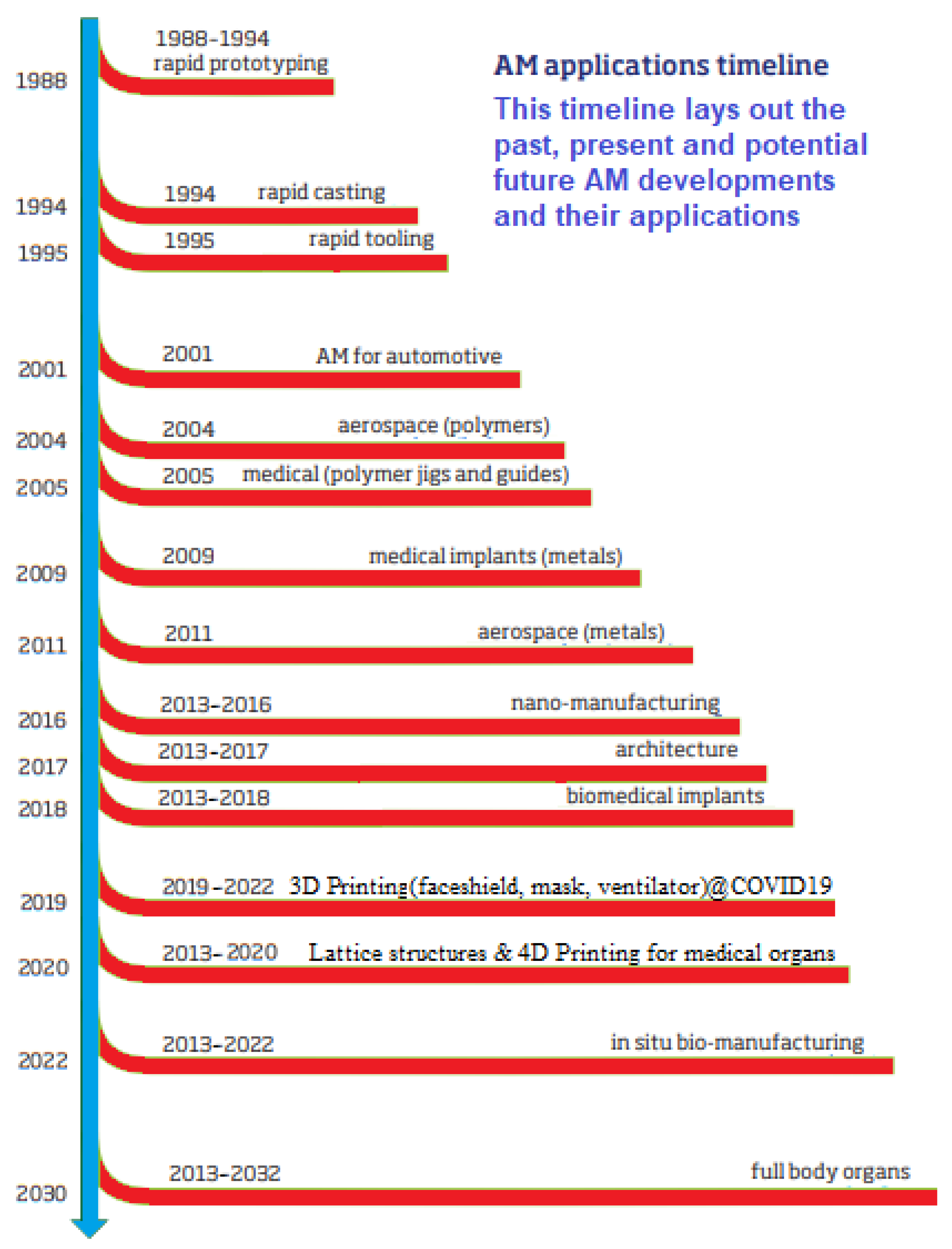
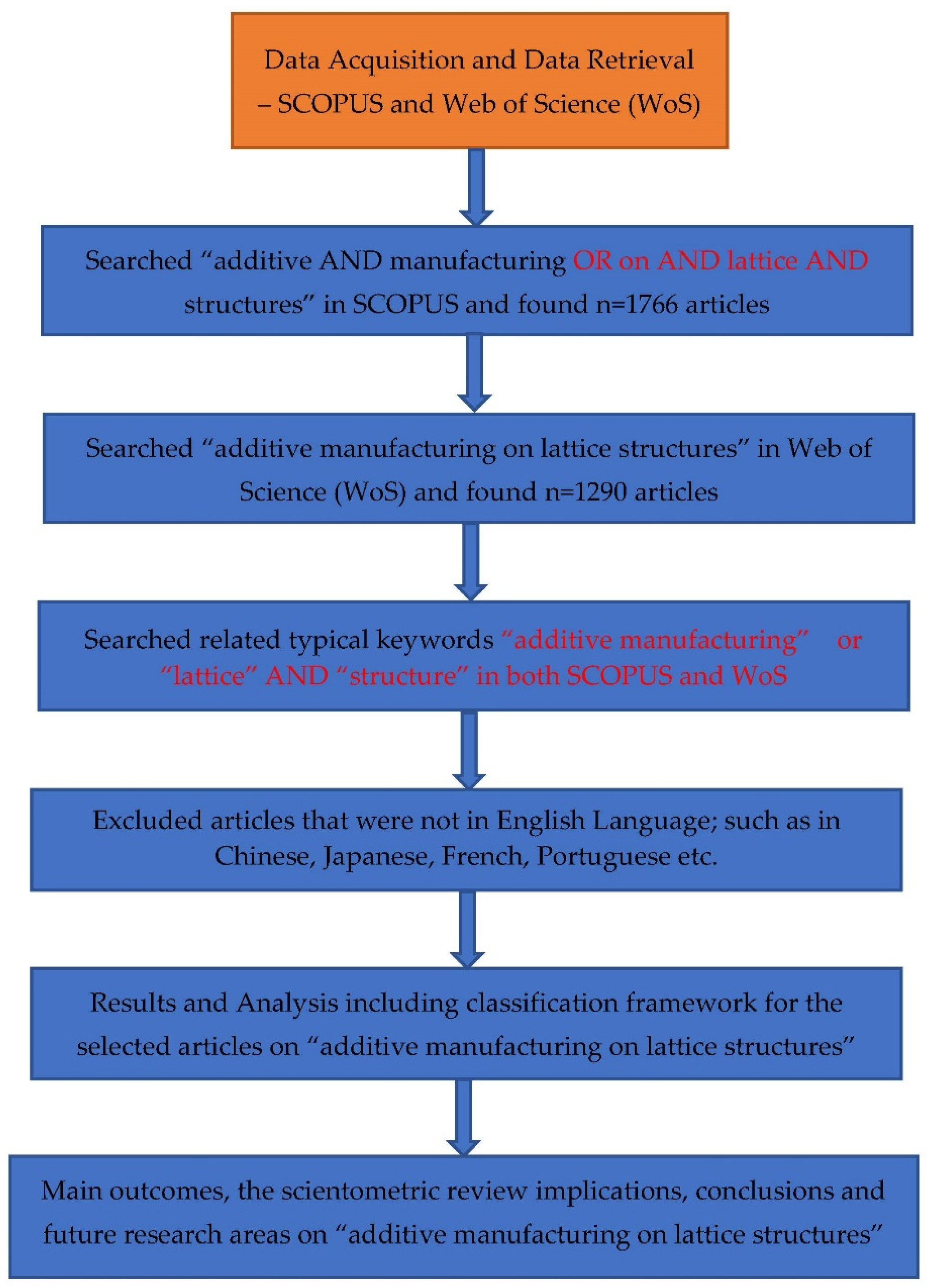

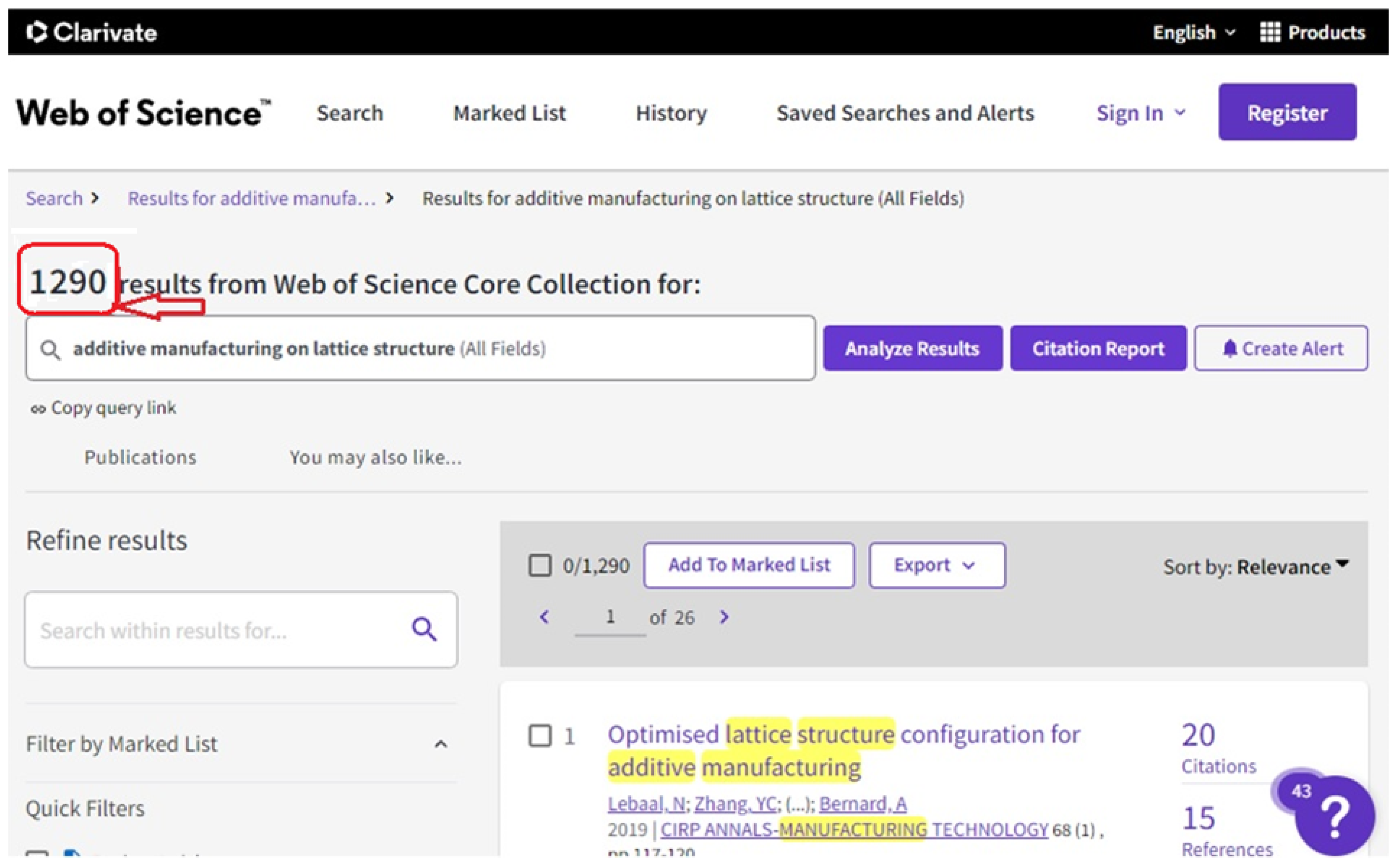
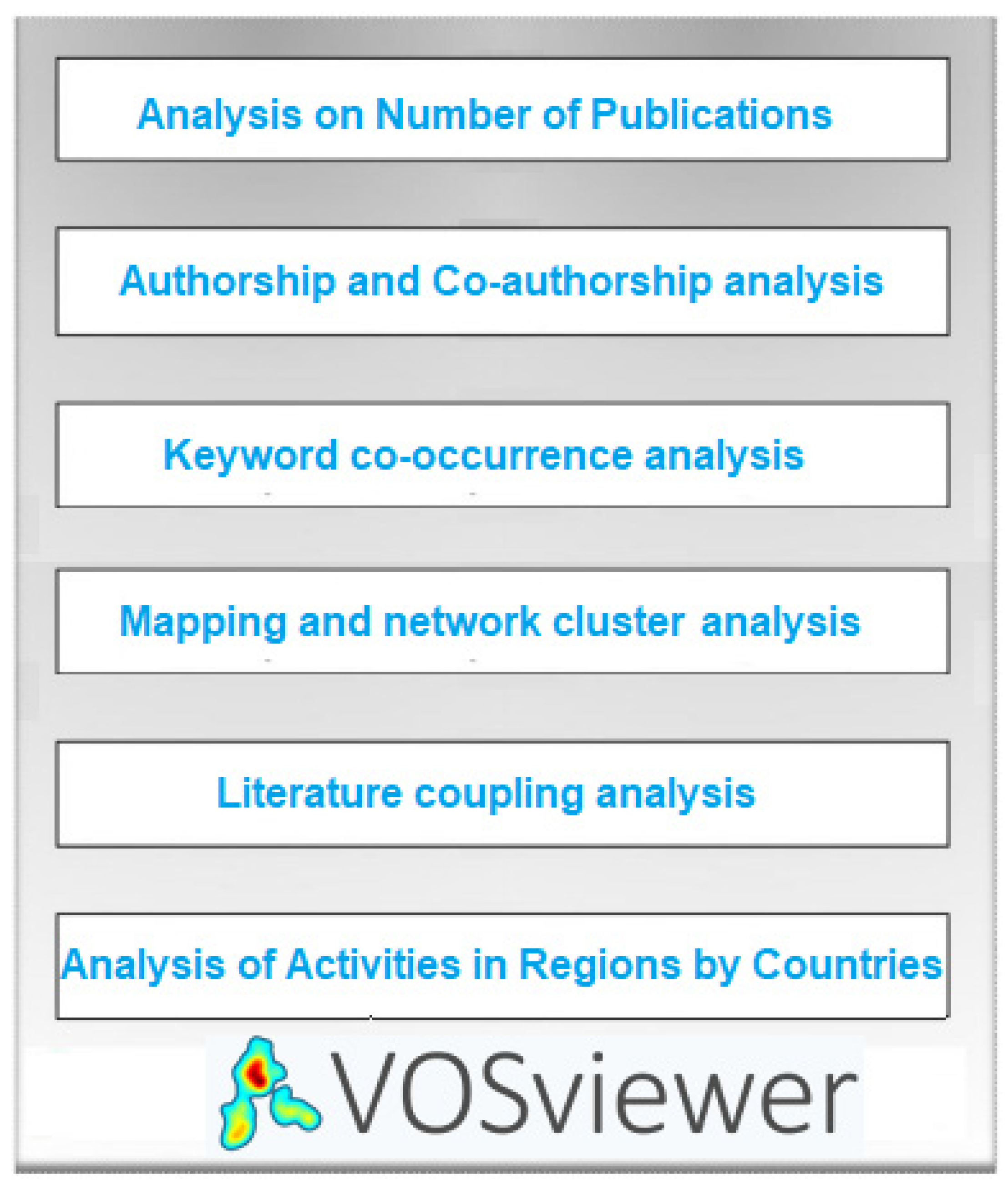

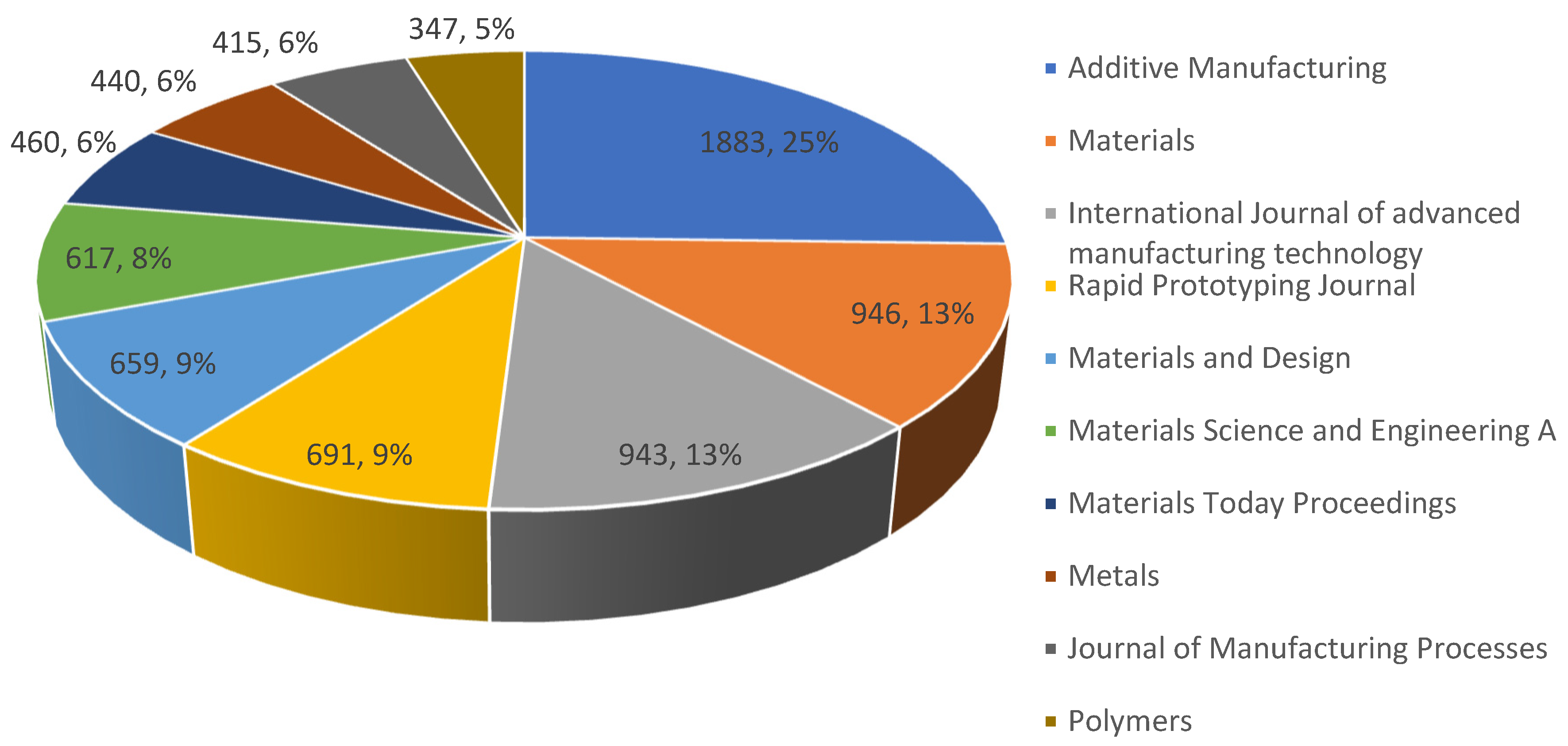

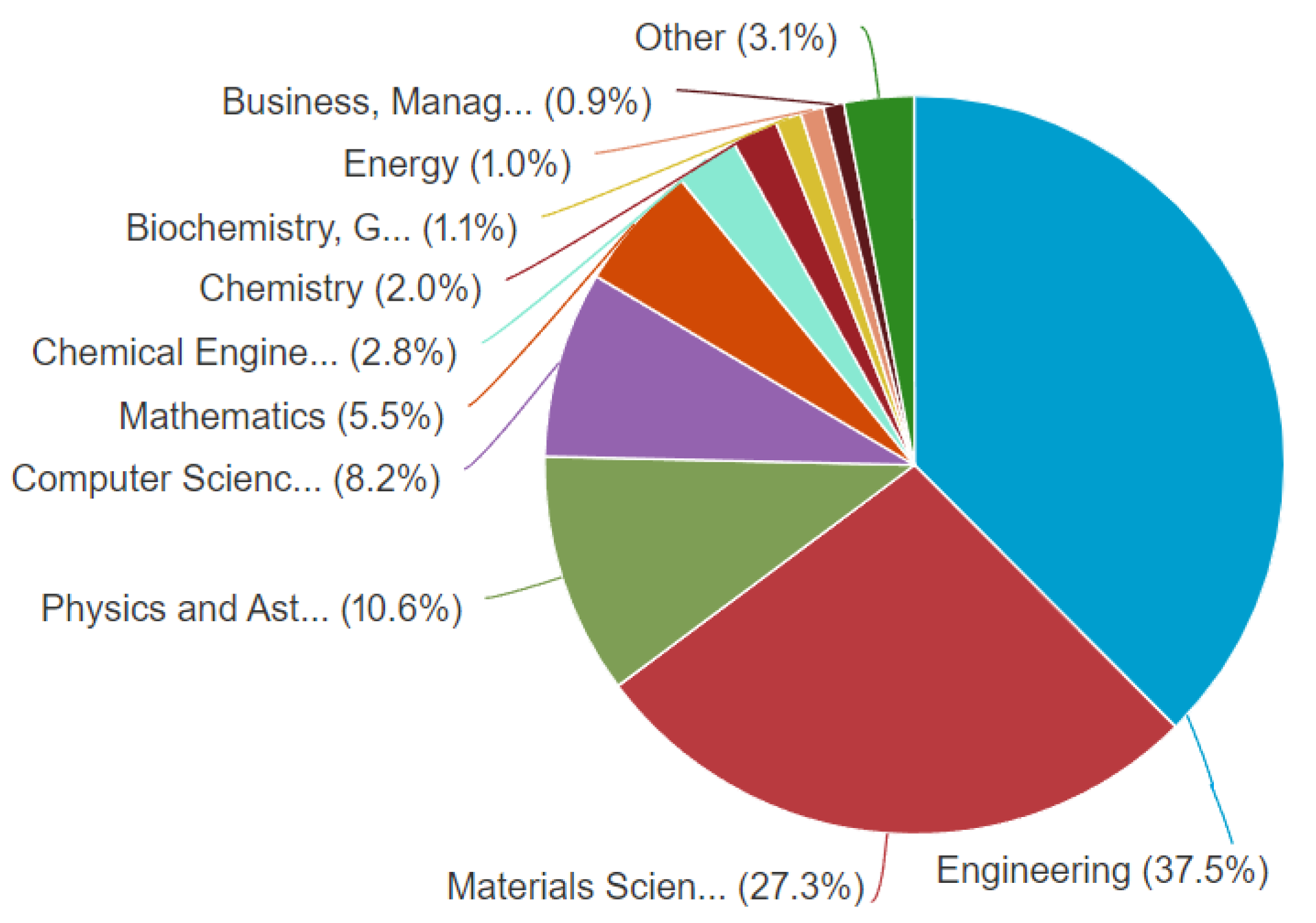
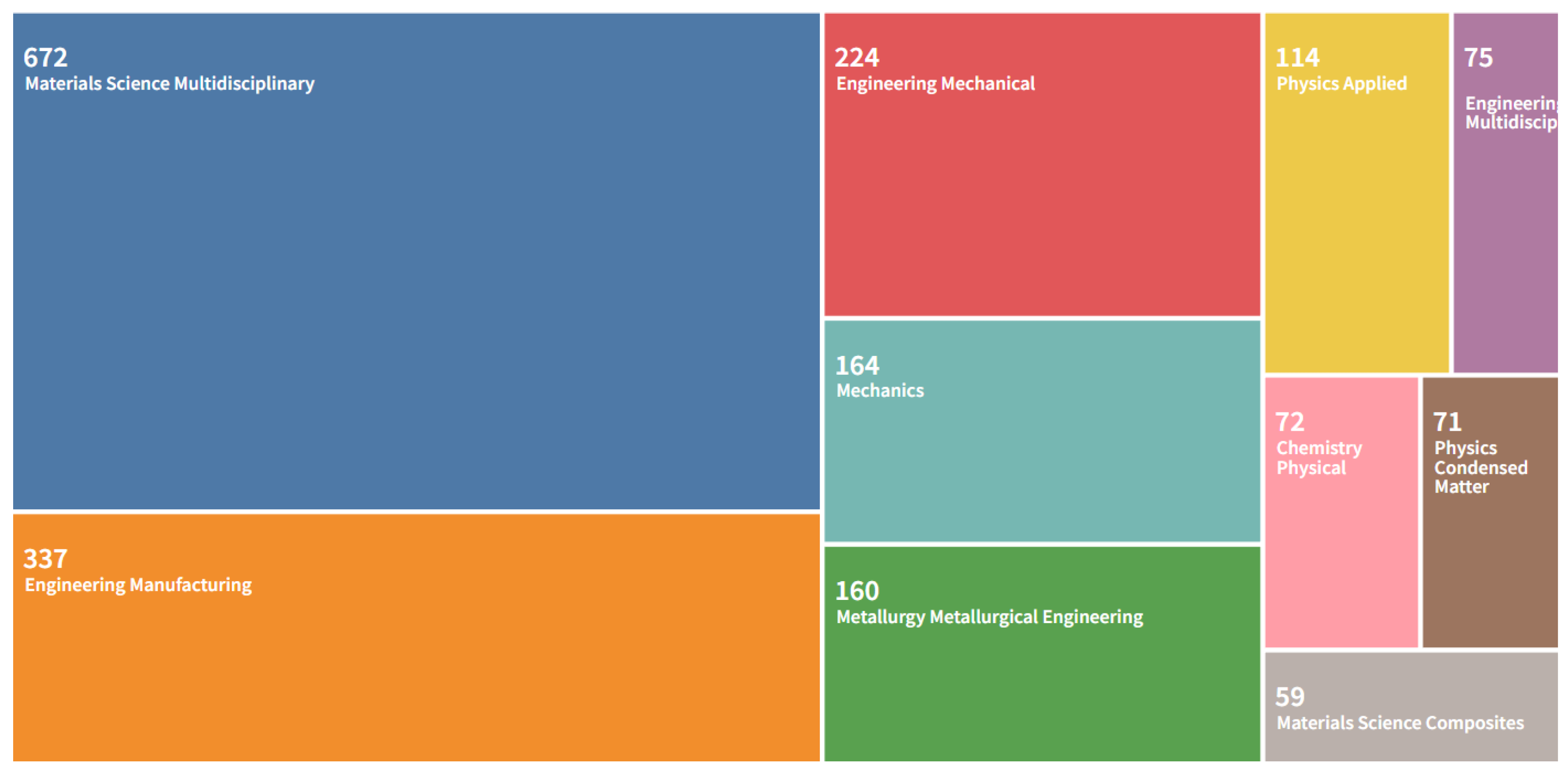
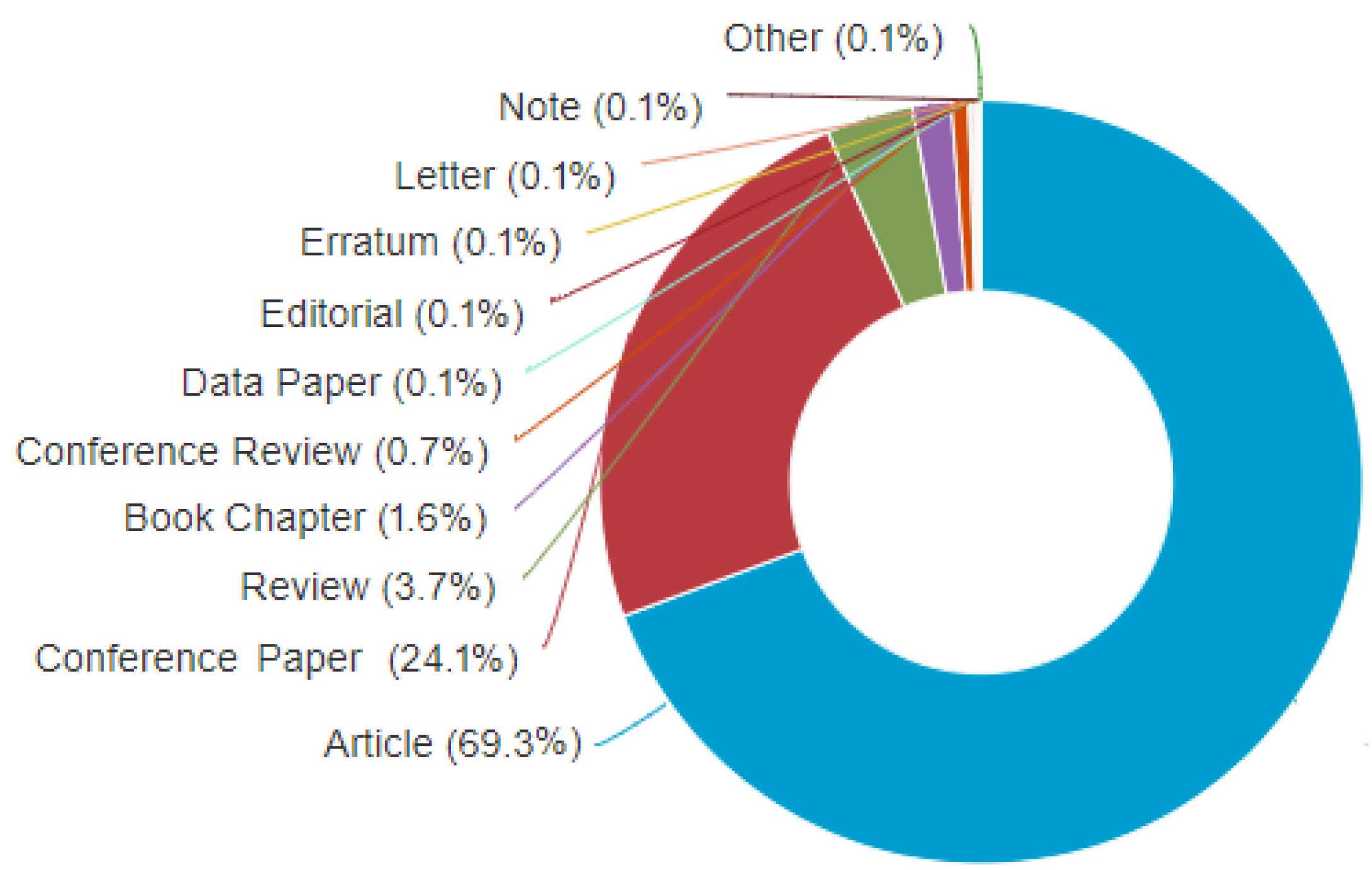

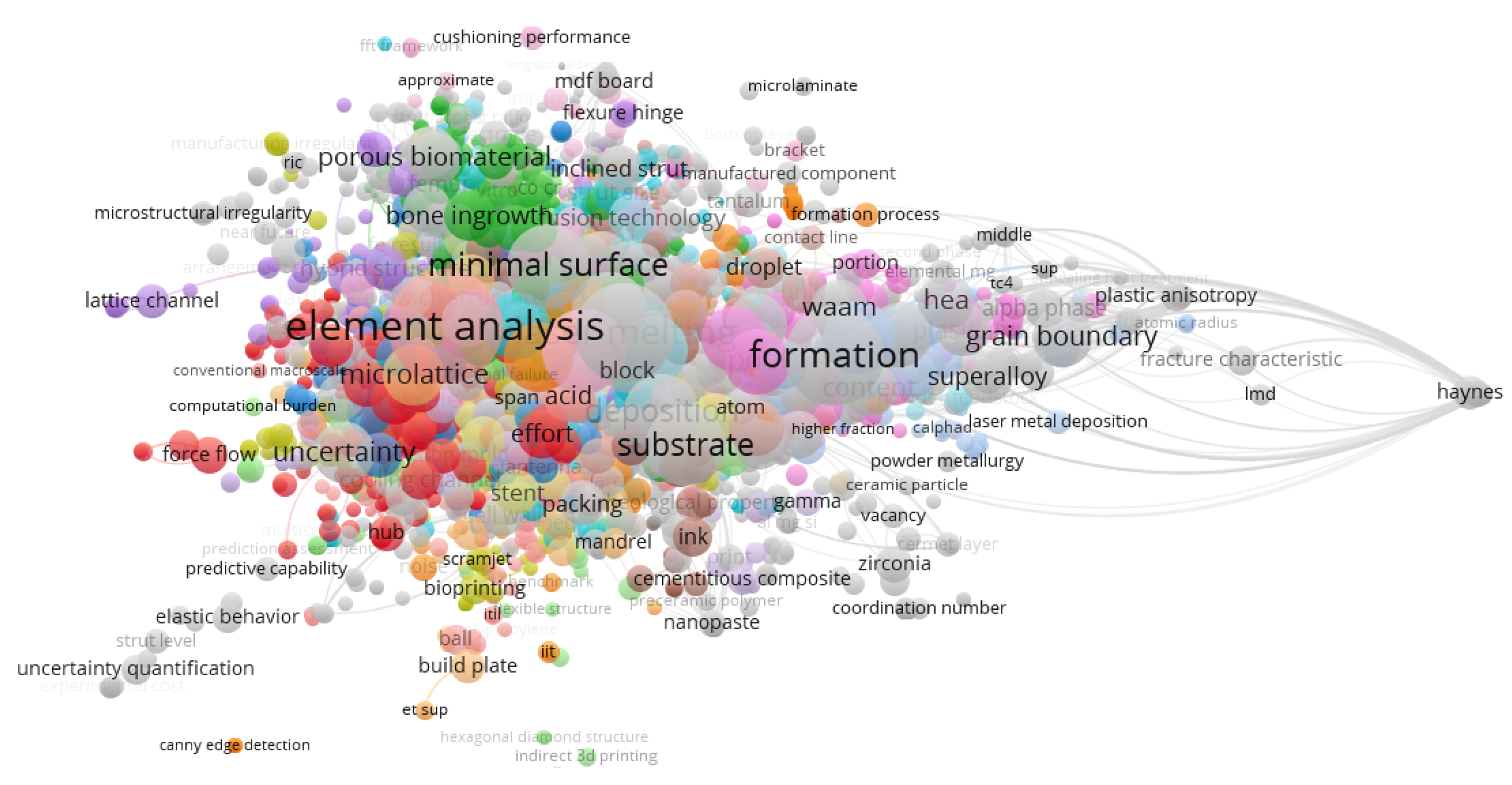
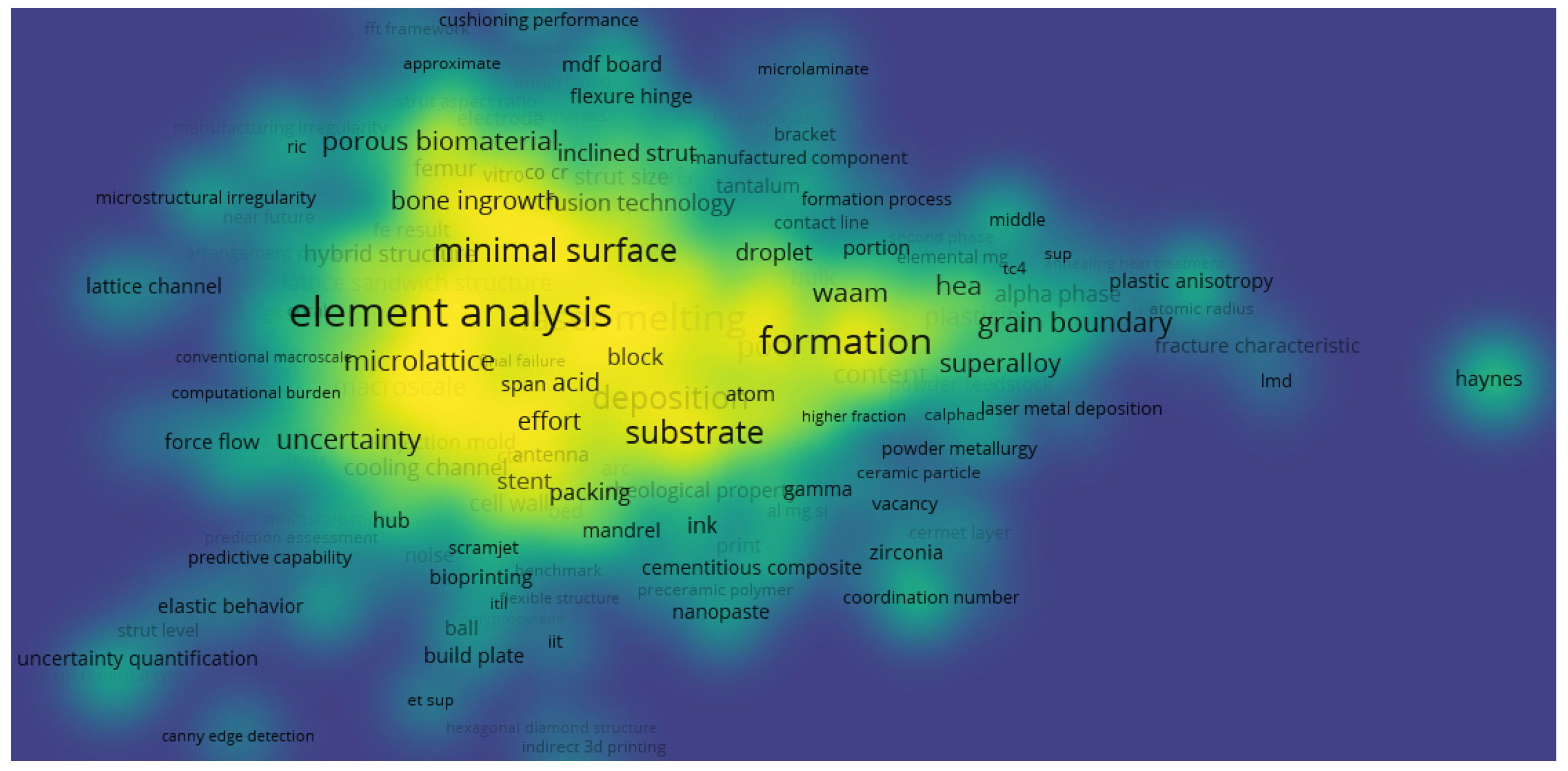
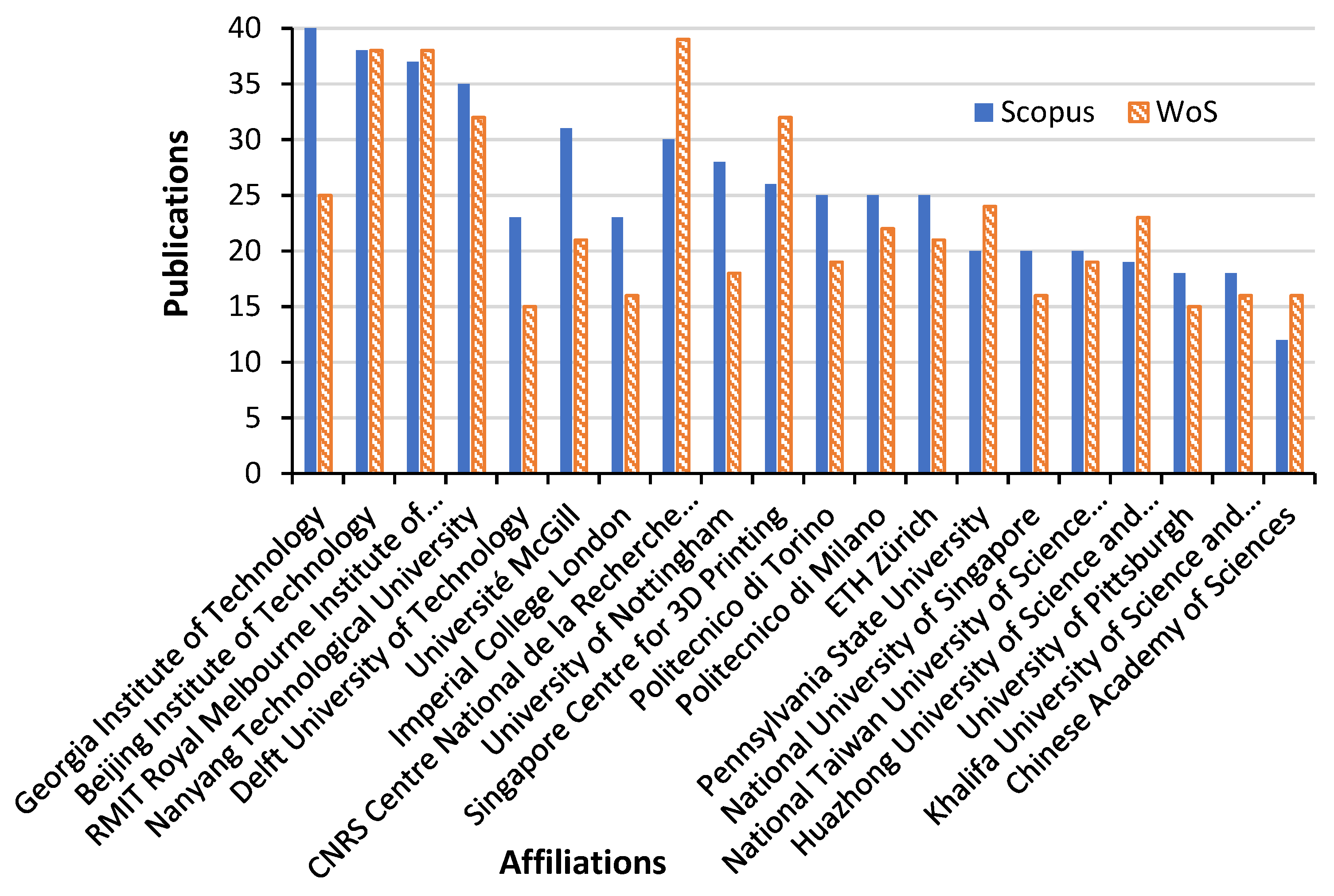
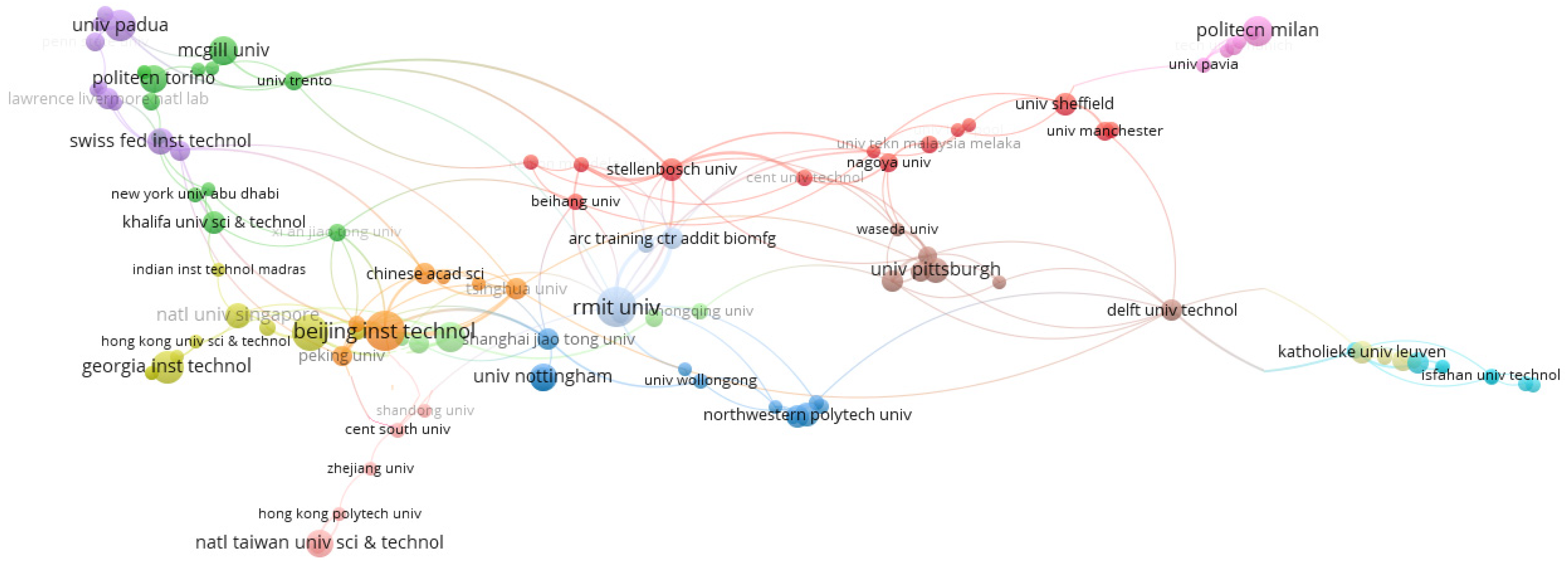
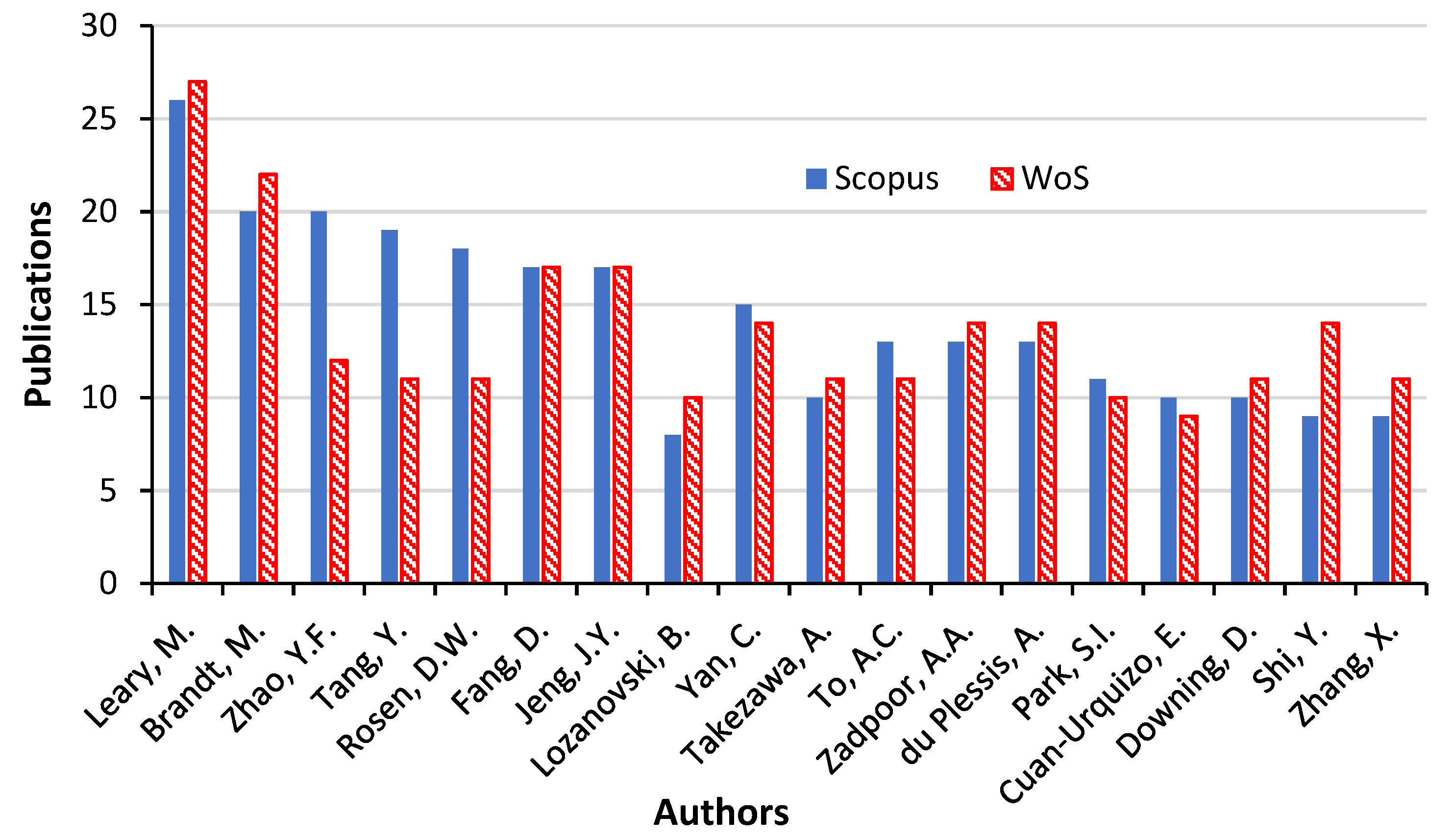
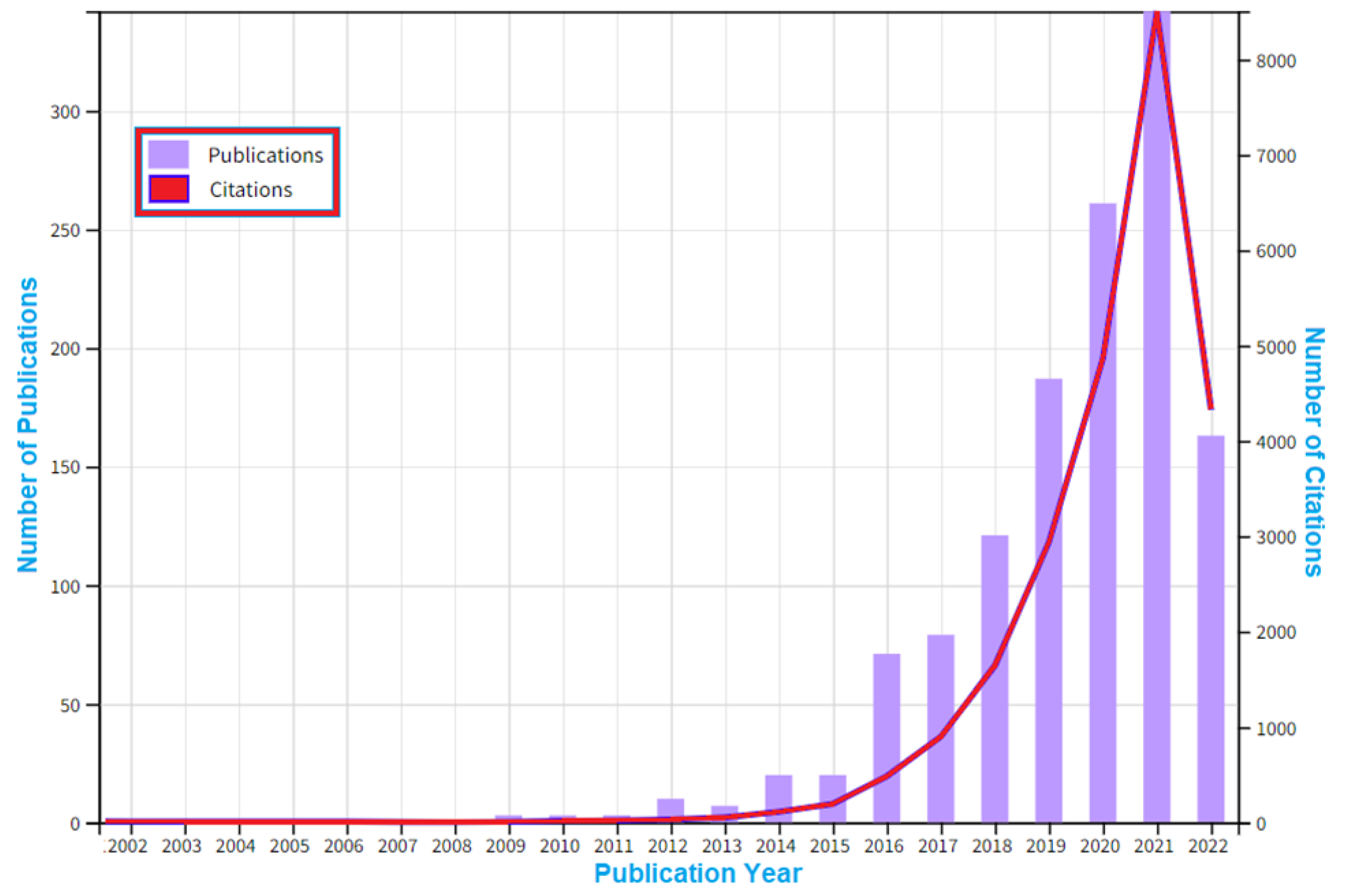
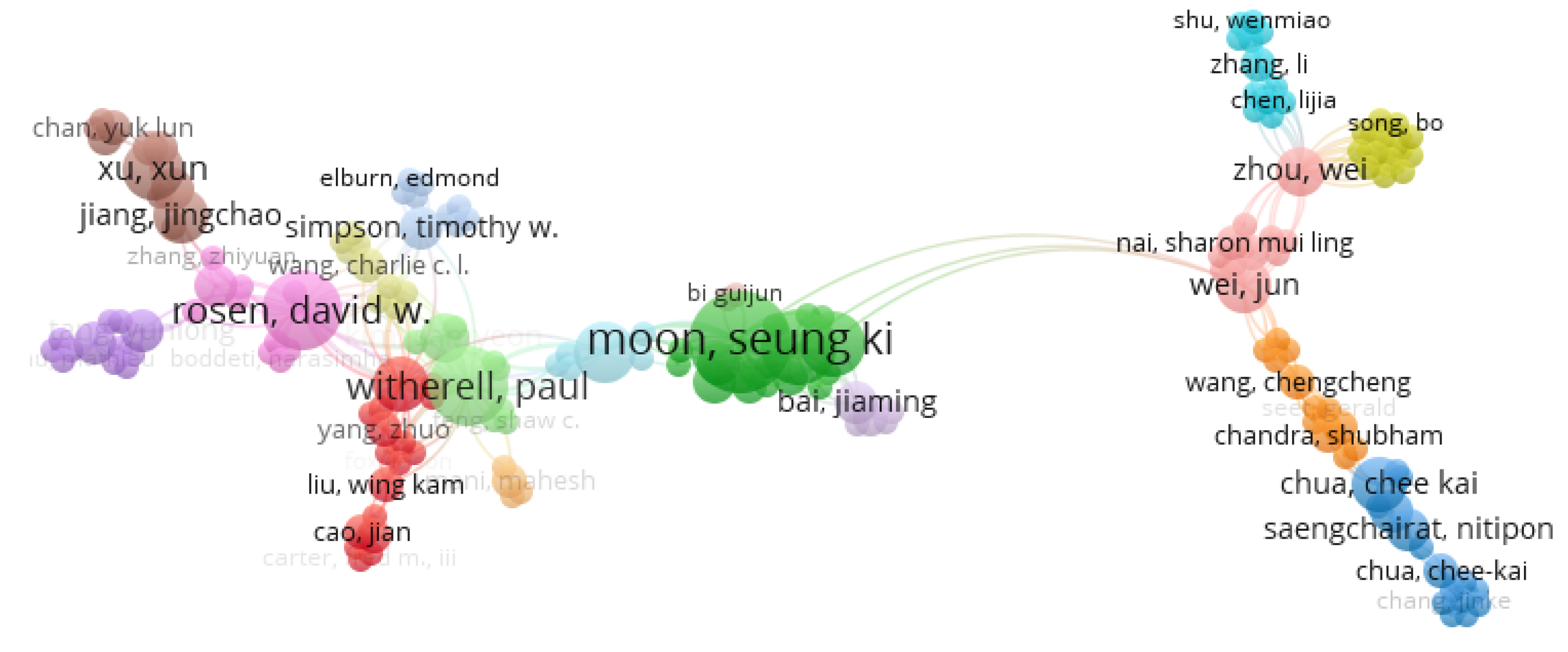
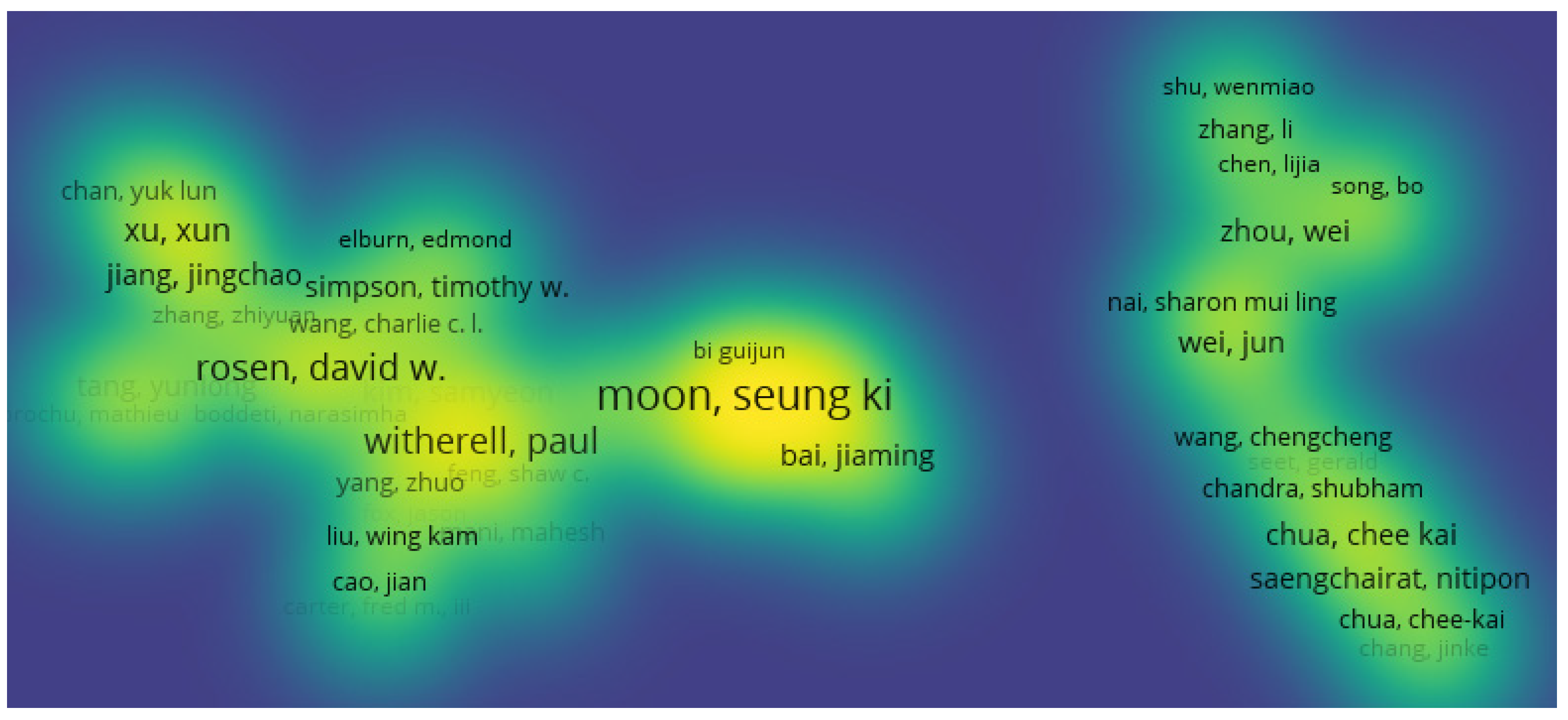
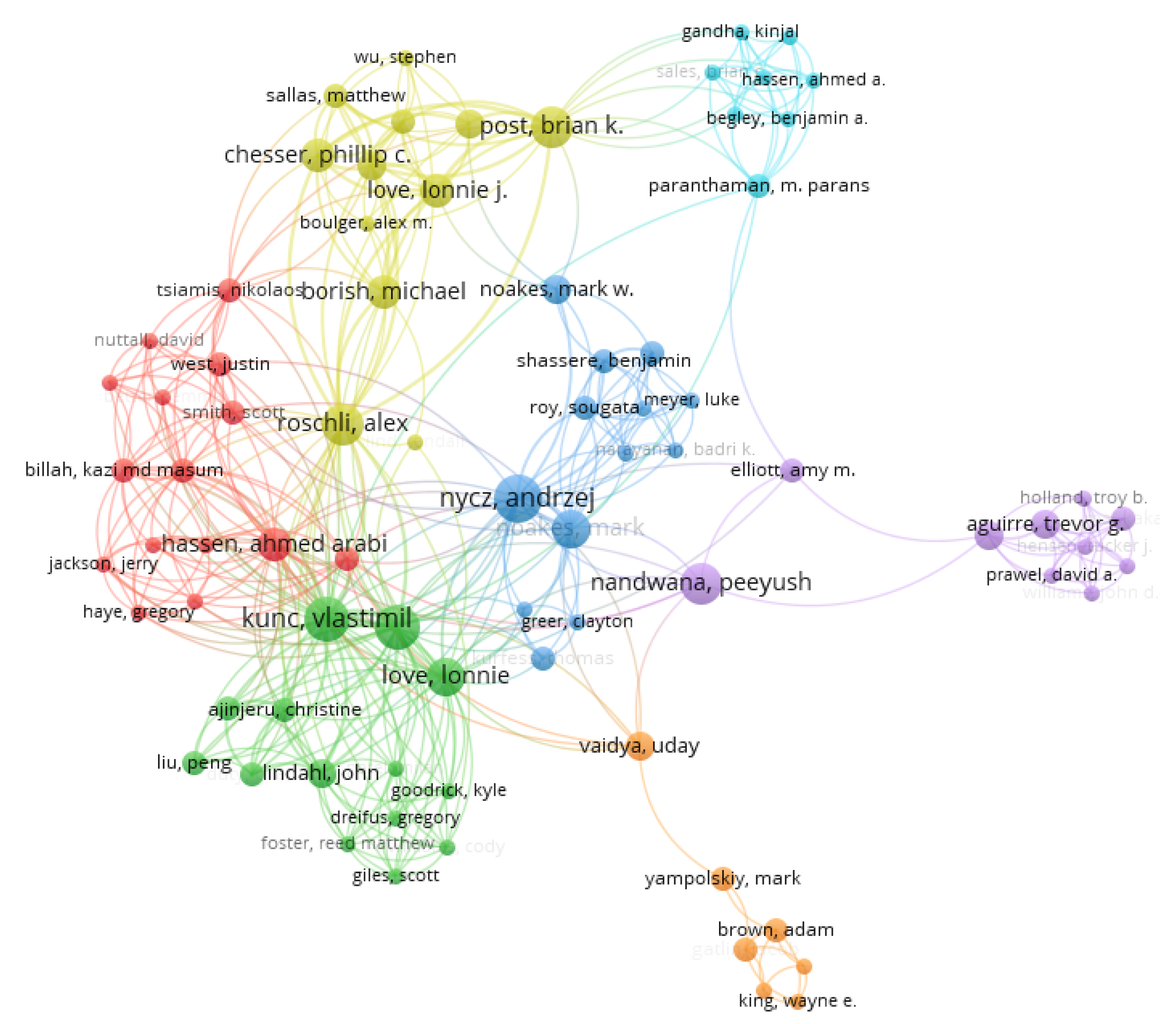
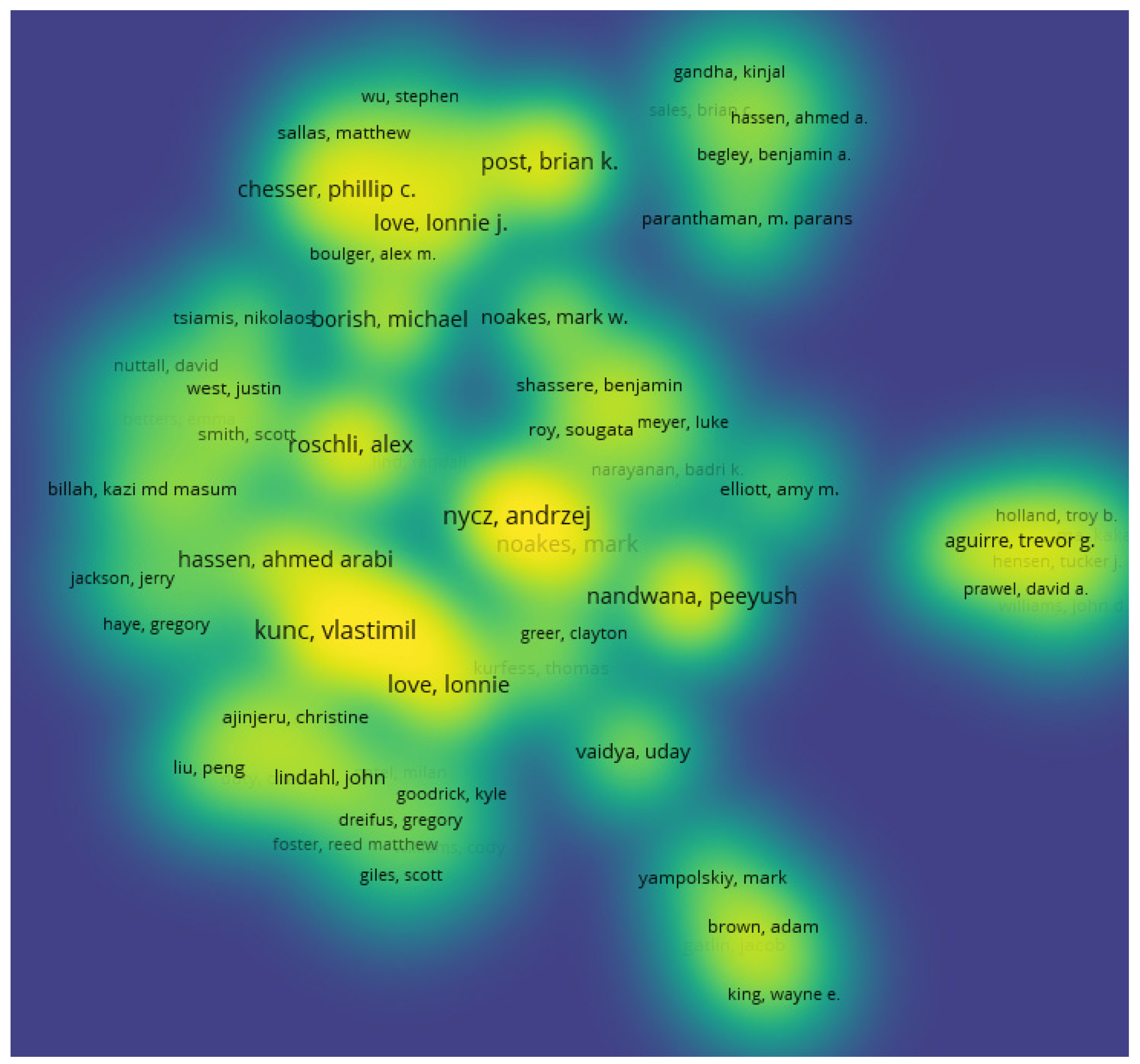
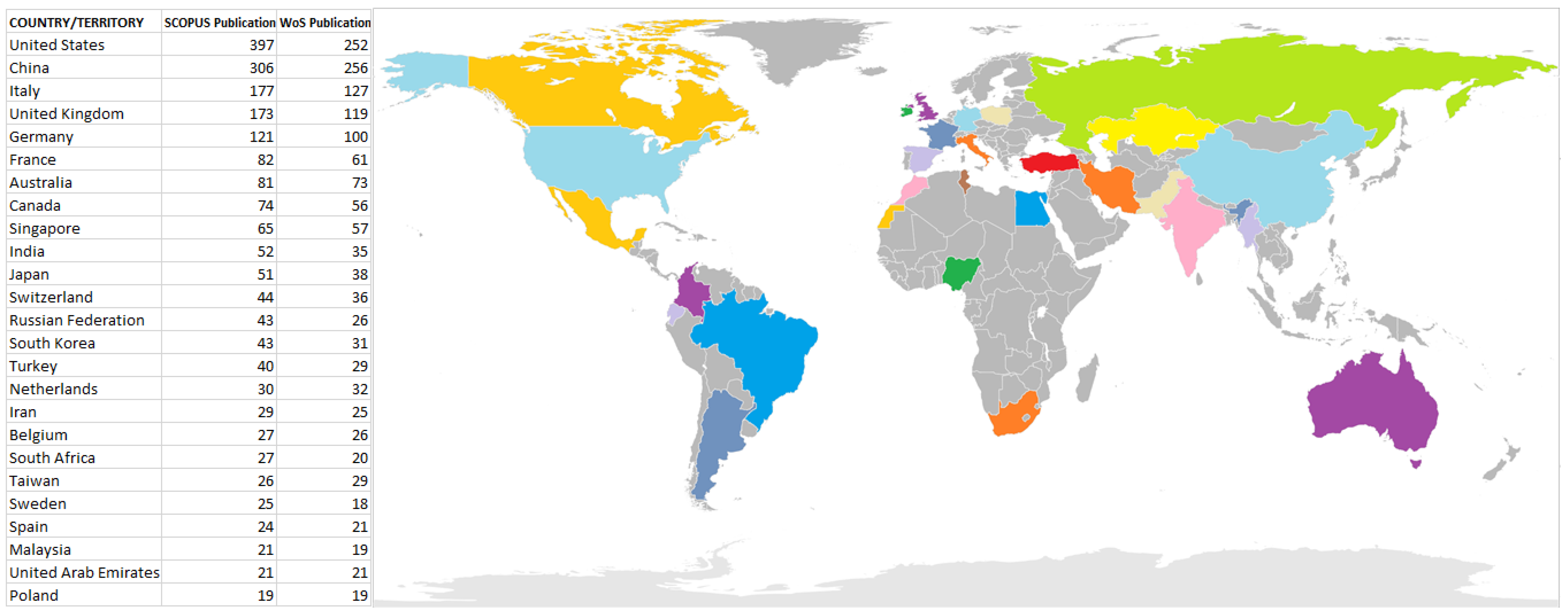
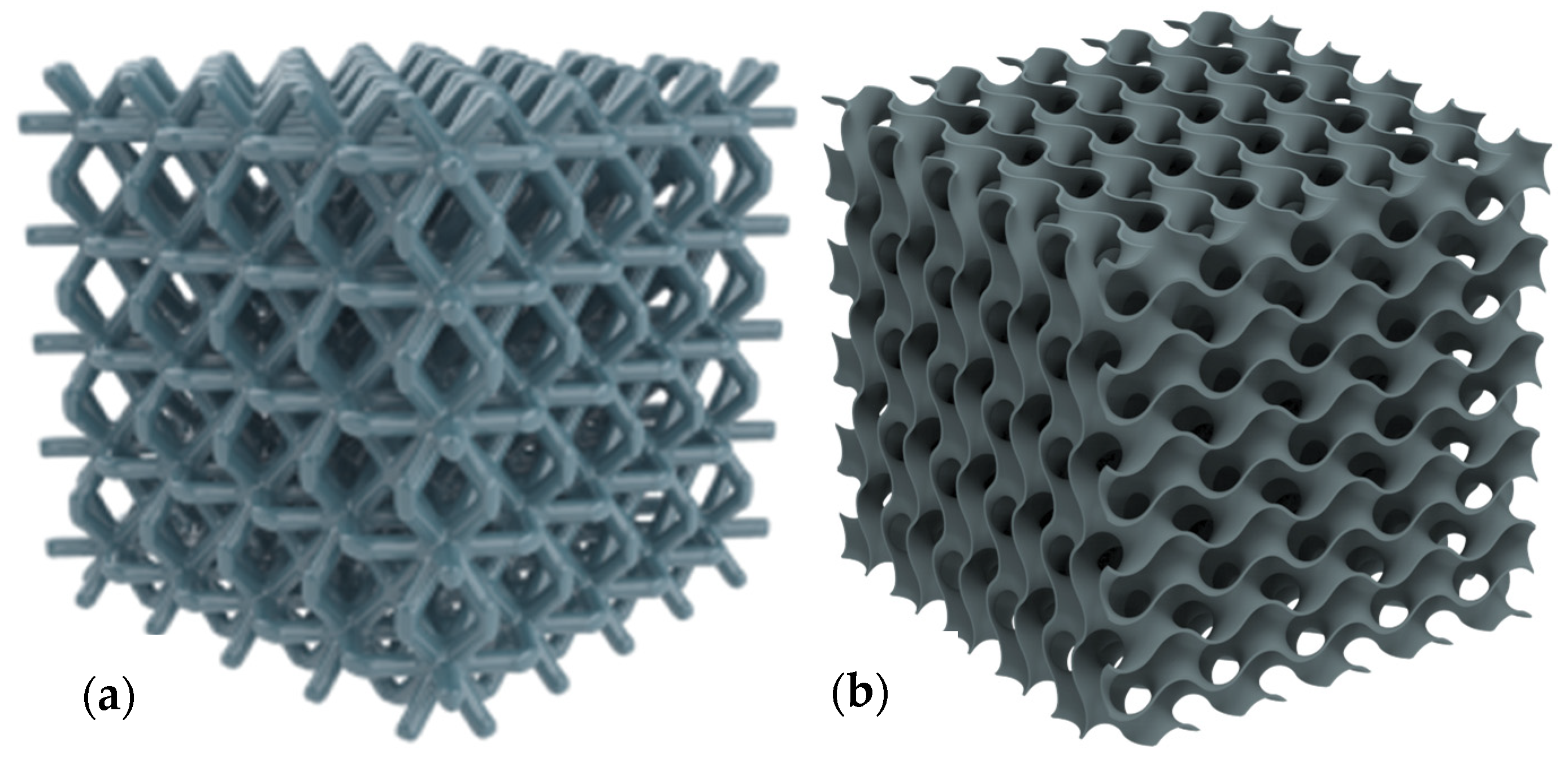
| Publication Source | Scopus | ||||||||
|---|---|---|---|---|---|---|---|---|---|
| Total Publications (TP) | 2021 Articles | 2020 Articles | 2019 Articles | 2018 Articles | 2017 Articles | CiteScore | SJR | SNIP | |
| Additive Manufacturing | 1883 | 521 | 477 | 250 | 241 | 80 | 11.6 | 2.71 | 2.946 |
| Materials | 946 | 316 | 236 | 121 | 89 | 37 | 4.2 | 0.682 | 1.261 |
| International Journal of advanced manufacturing technology | 943 | 159 | 182 | 149 | 112 | 71 | 5.6 | 0.946 | 1.486 |
| Rapid Prototyping Journal | 691 | 106 | 100 | 85 | 83 | 70 | 6.0 | 0.827 | 1.281 |
| Materials and Design | 659 | 168 | 111 | 78 | 93 | 64 | 13.0 | 1.842 | 2.264 |
| Materials Science and Engineering A | 617 | 159 | 109 | 96 | 47 | 42 | 8.8 | 1.574 | 1.973 |
| Materials Today Proceedings | 460 | 128 | 83 | 98 | 48 | 19 | 1.8 | 0.341 | 0.657 |
| Metals | 440 | 160 | 102 | 66 | 31 | 8 | 3.4 | 0.57 | 1.062 |
| Journal of Manufacturing Processes | 415 | 144 | 86 | 45 | 27 | 15 | 6.6 | 1.387 | 2.084 |
| Polymers | 347 | 144 | 82 | 25 | 16 | 3 | 4.7 | 0.77 | 1.2 |
| Web of Science Categories | Record Count | % of 1294 |
|---|---|---|
| Materials Science Multidisciplinary | 672 | 51.932 |
| Engineering Manufacturing | 337 | 26.043 |
| Engineering Mechanical | 224 | 17.311 |
| Mechanics | 164 | 12.674 |
| Metallurgy Metallurgical Engineering | 160 | 12.365 |
| Physics Applied | 114 | 8.81 |
| Engineering Multidisciplinary | 75 | 5.796 |
| Chemistry Physical | 72 | 5.564 |
| Physics Condensed Matter | 71 | 5.487 |
| Materials Science Composites | 59 | 4.56 |
| Engineering Biomedical | 56 | 4.328 |
| Materials Science Biomaterials | 48 | 3.709 |
| Nanoscience Nanotechnology | 48 | 3.709 |
| Automation Control Systems | 46 | 3.555 |
| Materials Science Characterization Testing | 42 | 3.246 |
| Engineering Industrial | 35 | 2.705 |
| Computer Science Interdisciplinary Applications | 29 | 2.241 |
| Mathematics Interdisciplinary Applications | 26 | 2.009 |
| Thermodynamics | 26 | 2.009 |
| Engineering Electrical Electronic | 25 | 1.932 |
| Chemistry Multidisciplinary | 22 | 1.7 |
| Engineering Civil | 21 | 1.623 |
| Instruments Instrumentation | 21 | 1.623 |
| Multidisciplinary Sciences | 21 | 1.623 |
| Polymer Science | 21 | 1.623 |
| Affiliation | Scopus | WoS | % of 513 | % of 465 |
|---|---|---|---|---|
| Georgia Institute of Technology | 40 | 25 | 7.797 | 5.376 |
| Beijing Institute of Technology | 38 | 38 | 7.407 | 8.172 |
| RMIT Royal Melbourne Institute of Technology | 37 | 38 | 7.212 | 8.172 |
| Nanyang Technological University | 35 | 32 | 6.823 | 6.882 |
| Delft University of Technology | 23 | 15 | 4.483 | 3.226 |
| Université McGill | 31 | 21 | 6.043 | 4.516 |
| Imperial College London | 23 | 16 | 4.483 | 3.441 |
| CNRS Centre National de la Recherche Scientifique | 30 | 39 | 5.848 | 8.387 |
| University of Nottingham | 28 | 18 | 5.458 | 3.871 |
| Singapore Centre for 3D Printing | 26 | 32 | 5.068 | 6.882 |
| Politecnico di Torino | 25 | 19 | 4.873 | 4.086 |
| Politecnico di Milano | 25 | 22 | 4.873 | 4.731 |
| ETH Zürich | 25 | 21 | 4.873 | 4.516 |
| Pennsylvania State University | 20 | 24 | 3.899 | 5.161 |
| National University of Singapore | 20 | 16 | 3.899 | 3.441 |
| National Taiwan University of Science and Technology | 20 | 19 | 3.899 | 4.086 |
| Huazhong University of Science and Technology | 19 | 23 | 3.704 | 4.946 |
| University of Pittsburgh | 18 | 15 | 3.509 | 3.226 |
| Khalifa University of Science and Technology | 18 | 16 | 3.509 | 3.441 |
| Chinese Academy of Sciences | 12 | 16 | 2.339 | 3.441 |
| Author Name | Scopus | WoS | % of 258 | % of 246 |
|---|---|---|---|---|
| Leary, M. | 26 | 27 | 10.078 | 10.976 |
| Brandt, M. | 20 | 22 | 7.752 | 8.943 |
| Zhao, Y.F. | 20 | 12 | 7.752 | 4.878 |
| Tang, Y. | 19 | 11 | 7.364 | 4.472 |
| Rosen, D.W. | 18 | 11 | 6.977 | 4.472 |
| Fang, D. | 17 | 17 | 6.589 | 6.911 |
| Jeng, J.Y. | 17 | 17 | 6.589 | 6.911 |
| Lozanovski, B. | 8 | 10 | 3.101 | 4.065 |
| Yan, C. | 15 | 14 | 5.814 | 5.691 |
| Takezawa, A. | 10 | 11 | 3.876 | 4.472 |
| To, A.C. | 13 | 11 | 5.039 | 4.472 |
| Zadpoor, A.A. | 13 | 14 | 5.039 | 5.691 |
| du Plessis, A. | 13 | 14 | 5.039 | 5.691 |
| Park, S.I. | 11 | 10 | 4.264 | 4.065 |
| Cuan-Urquizo, E. | 10 | 9 | 3.876 | 3.659 |
| Downing, D. | 10 | 11 | 3.876 | 4.472 |
| Shi, Y. | 9 | 14 | 3.488 | 5.691 |
| Zhang, X. | 9 | 11 | 3.488 | 4.472 |
| Country/Territory | Scopus | WoS | % of Scopus Sum (1998) | % of WoS Sum (1526) |
|---|---|---|---|---|
| United States | 397 | 252 | 19.869 | 16.514 |
| China | 306 | 256 | 15.315 | 16.776 |
| Italy | 177 | 127 | 8.859 | 8.322 |
| United Kingdom | 173 | 119 | 8.659 | 7.798 |
| Germany | 121 | 100 | 6.056 | 6.553 |
| France | 82 | 61 | 4.104 | 3.997 |
| Australia | 81 | 73 | 4.054 | 4.784 |
| Canada | 74 | 56 | 3.704 | 3.669 |
| Singapore | 65 | 57 | 3.253 | 3.735 |
| India | 52 | 35 | 2.603 | 2.294 |
| Japan | 51 | 38 | 2.553 | 2.490 |
| Switzerland | 44 | 36 | 2.202 | 2.359 |
| Russian Federation | 43 | 26 | 2.152 | 1.704 |
| South Korea | 43 | 31 | 2.152 | 2.031 |
| Turkey | 40 | 29 | 2.002 | 1.900 |
| Netherlands | 30 | 32 | 1.502 | 2.097 |
| Iran | 29 | 25 | 1.451 | 1.638 |
| Belgium | 27 | 26 | 1.351 | 1.704 |
| South Africa | 27 | 20 | 1.351 | 1.311 |
| Taiwan | 26 | 29 | 1.301 | 1.900 |
| Sweden | 25 | 18 | 1.251 | 1.180 |
| Spain | 24 | 21 | 1.201 | 1.376 |
| Malaysia | 21 | 19 | 1.051 | 1.245 |
| United Arab Emirates | 21 | 21 | 1.051 | 1.376 |
| Poland | 19 | 19 | 0.951 | 1.245 |
Publisher’s Note: MDPI stays neutral with regard to jurisdictional claims in published maps and institutional affiliations. |
© 2022 by the authors. Licensee MDPI, Basel, Switzerland. This article is an open access article distributed under the terms and conditions of the Creative Commons Attribution (CC BY) license (https://creativecommons.org/licenses/by/4.0/).
Share and Cite
Amaechi, C.V.; Adefuye, E.F.; Kgosiemang, I.M.; Huang, B.; Amaechi, E.C. Scientometric Review for Research Patterns on Additive Manufacturing of Lattice Structures. Materials 2022, 15, 5323. https://doi.org/10.3390/ma15155323
Amaechi CV, Adefuye EF, Kgosiemang IM, Huang B, Amaechi EC. Scientometric Review for Research Patterns on Additive Manufacturing of Lattice Structures. Materials. 2022; 15(15):5323. https://doi.org/10.3390/ma15155323
Chicago/Turabian StyleAmaechi, Chiemela Victor, Emmanuel Folarin Adefuye, Irish Mpho Kgosiemang, Bo Huang, and Ebube Charles Amaechi. 2022. "Scientometric Review for Research Patterns on Additive Manufacturing of Lattice Structures" Materials 15, no. 15: 5323. https://doi.org/10.3390/ma15155323
APA StyleAmaechi, C. V., Adefuye, E. F., Kgosiemang, I. M., Huang, B., & Amaechi, E. C. (2022). Scientometric Review for Research Patterns on Additive Manufacturing of Lattice Structures. Materials, 15(15), 5323. https://doi.org/10.3390/ma15155323






